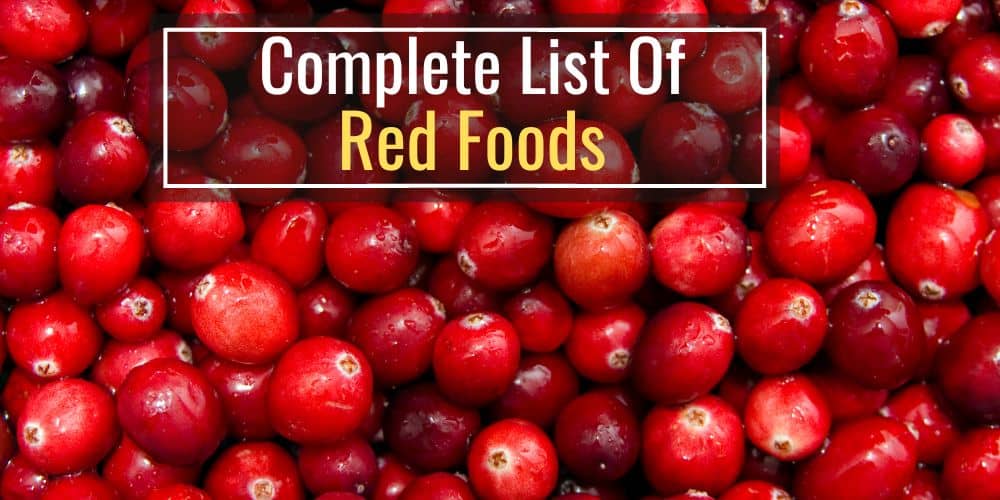Looking to add some new and interesting foods to your menu? Why not try something red?
Red foods are not only delicious but they are also packed with nutrients. Many red foods are high in antioxidants and vitamins, making them a great addition to your diet.
There are plenty of red options, from sauces and beverages to meats and fruits.
We’ve compiled the list of red foods listed in alphabetical order.
Here is a list of all the different food-colored lists with pictures if you’re looking for other colored foods:
1. Beef
The first food on our list is beef.
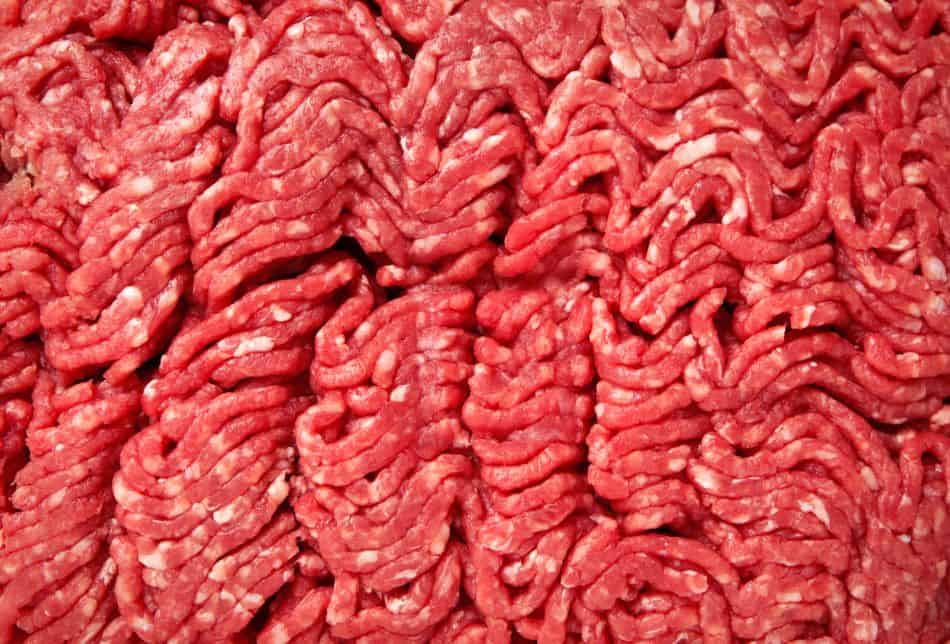
Ground beef and many cuts of beef are a bright cherry red color with spots or slivers of white fat.
The origin of beef dates back to the prehistoric era. The aurochs, a relative of modern cows, are seen in the earliest cave paintings hunted by cavemen.
Beef is rich in nutrients and contains protein, iron, riboflavin, zinc, niacin, selenium, vitamins B6 and B12, phosphorus, magnesium, and potassium.
2. Beets
Beet is a root vegetable generally bright red in color.
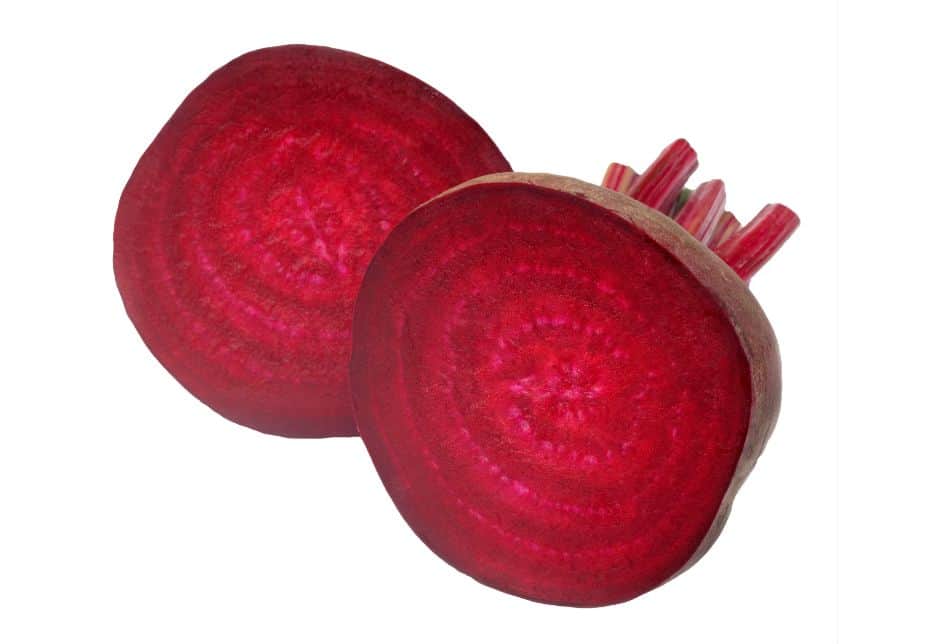
It carries an interesting history. The root part of beet is supposed to have been cultivated first in 1542 in either Italy or Germany.
Although they taste great raw, beets are also juiced or pickled. You can even eat their leaves, sometimes referred to as beet greens.
Beets are mostly composed of carbohydrates, fiber, and water.
3. Blood Oranges
Blood oranges are citrus fruits that are beautiful and sort of crimson-colored. They were discovered in the southern Mediterranean region.
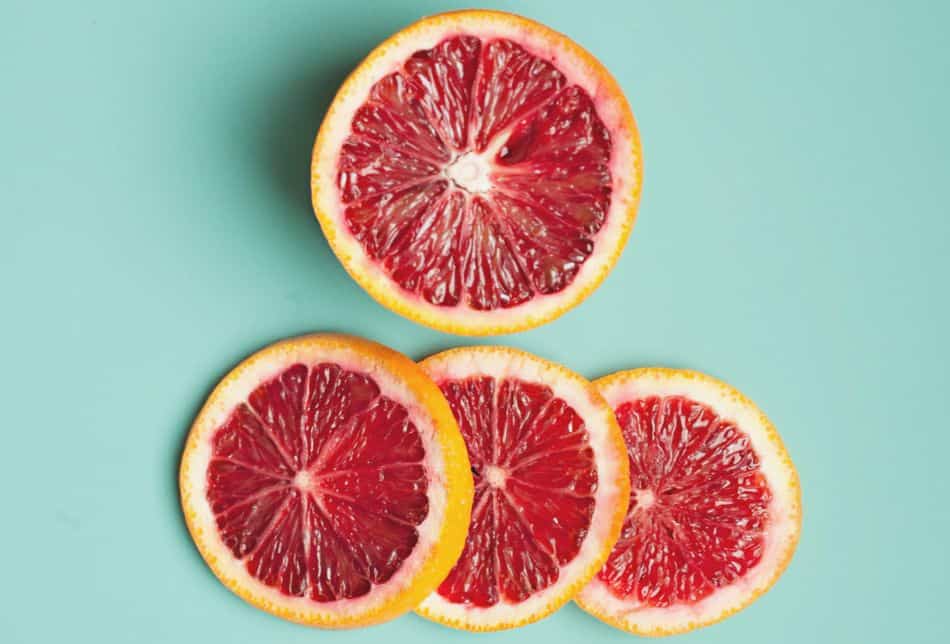
They are slightly smaller than other varieties of oranges. The flavor is rich and resembles navel oranges, although they are more flowery and acidic.
With no significant additional amounts of micronutrients, raw blood oranges are a good source of vitamin C, dietary fiber, and folate and are low in calories.
4. Carmine
Carmine is a red food colorant derived from the Cochineal insect, native to Latin America. It was discovered five centuries ago by the Maya and Aztecs.
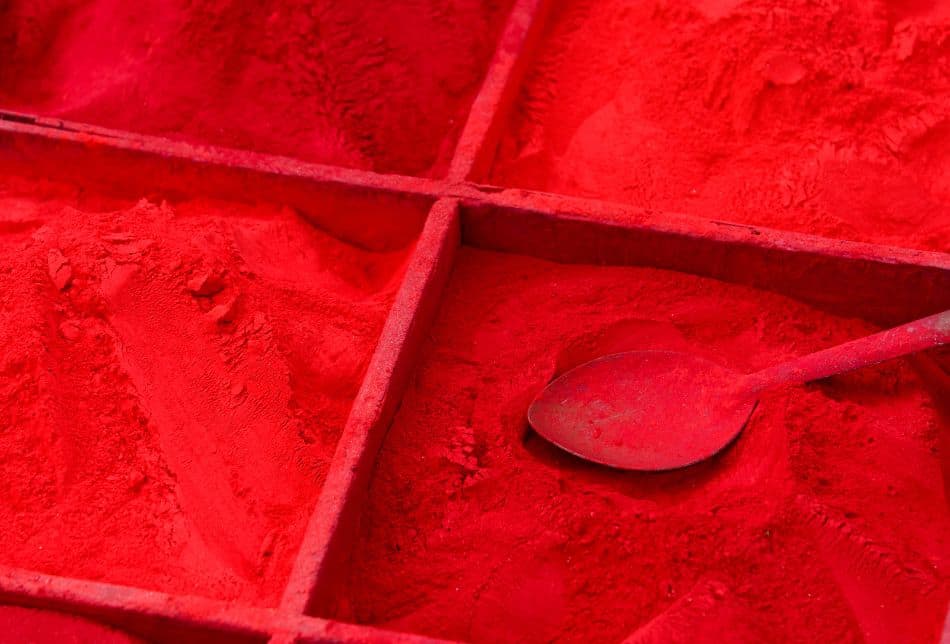
The female Cochineal insect contains a crimson-colored carminic acid used to produce Carmine. It takes around 70,000 insects to make just one pound of this red food colorant.
Carmine is a common ingredient in the world’s food supply and is used to color anything from yogurt to cupcakes.
Fun Fact: It is widely utilized in cosmetics and is a component of many lipsticks.
5. Cherries
Cherries are tiny, fleshy fruits ranging from yellow to dark red and have smooth, hard seeds.
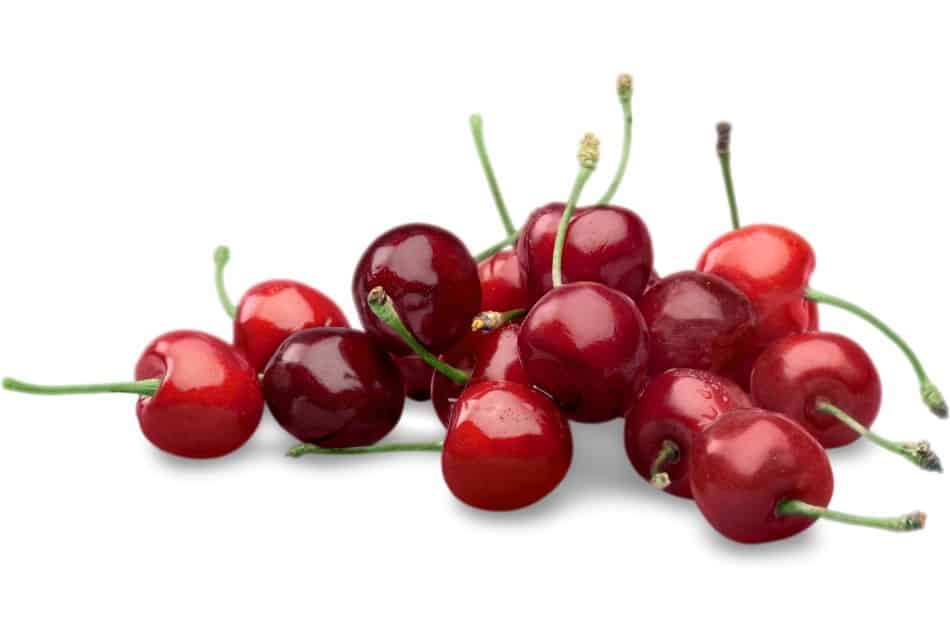
Cherries range from tart to sweet flavor and are indigenous to western Asia and eastern Europe, from the Caspian Sea to the Balkans.
Cherries are high in fiber, vitamins, and minerals while low in calories. They also contain vitamins K, A, and C.
The shapes of cherries vary and can be either spherical or long and heart-shaped.
6. Cranberries
Cranberries are a type of red berry. They are hard, small, round, and native to northeastern North America.

Cranberries are usually tart and acidic, with a slightly sweet taste. They are frequently used in pies, jams, and sauces.
Moreover, the tiny fruit can be enjoyed fresh, frozen, dried, or even canned.
Often described as a “superfood,” cranberries are an excellent source of various vitamins and antioxidants. They contain four different types of vitamin B (B-1, B-2, B-3, and B-6).
7. Cardinal Grapes
Recognized as table grapes, Cardinal grapes are red.
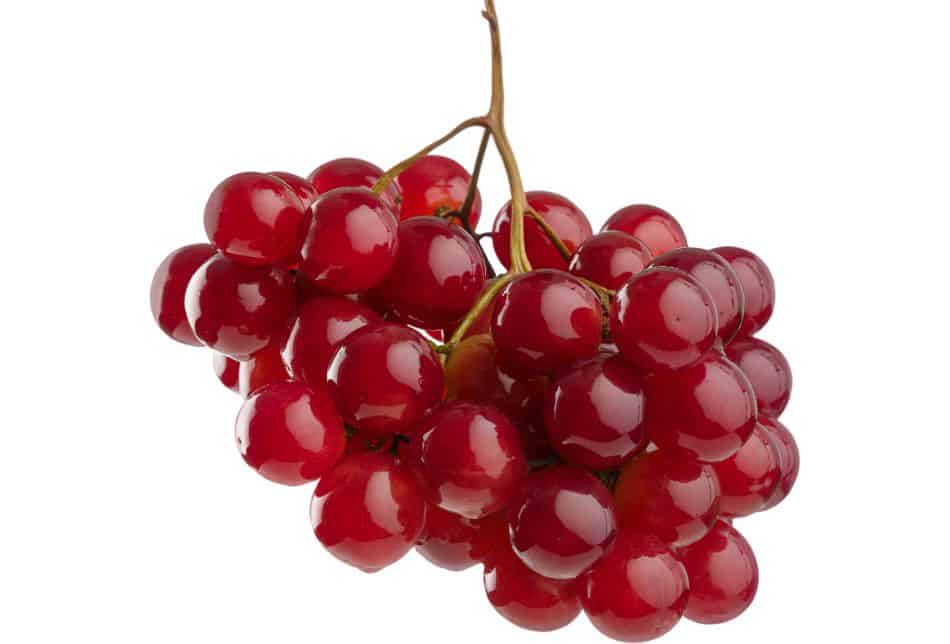
The skin is delicate, and the flesh is tender with a juicy, sweet flavor.
Originally produced in California in 1939, the Cardinal grape is regarded as an evergreen vine that can be eaten as a fruit or even used to extract wine.
They offer nutrients such as vitamins A, C, calcium, and iron, apart from carbohydrates and protein.
8. Caribbean Red Papaya
Caribbean red papaya has a flavor somewhat equal to melon and has a fragrance but not a pungent scent.
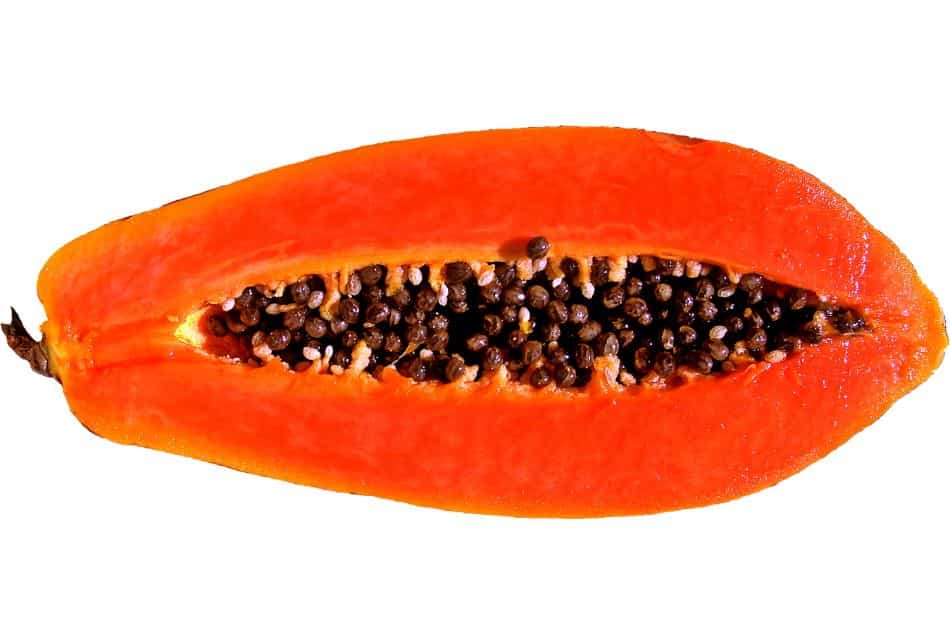
The outside of the fruit is yellow, and the inside is red. It contains enzymes and papain, which is beneficial for better digestion.
The Caribbean red papaya originated in Guatemala.
However, Mexico is the major competitive growing region for this fruit.
The fruit is packed with nutrients like sodium, iron, calcium, potassium, vitamin A, and vitamin C.
9. Cashew Apple
The cashew apple is primarily the fruit of the cashew tree. It is slightly reddish and is sweet with notes of bell pepper.
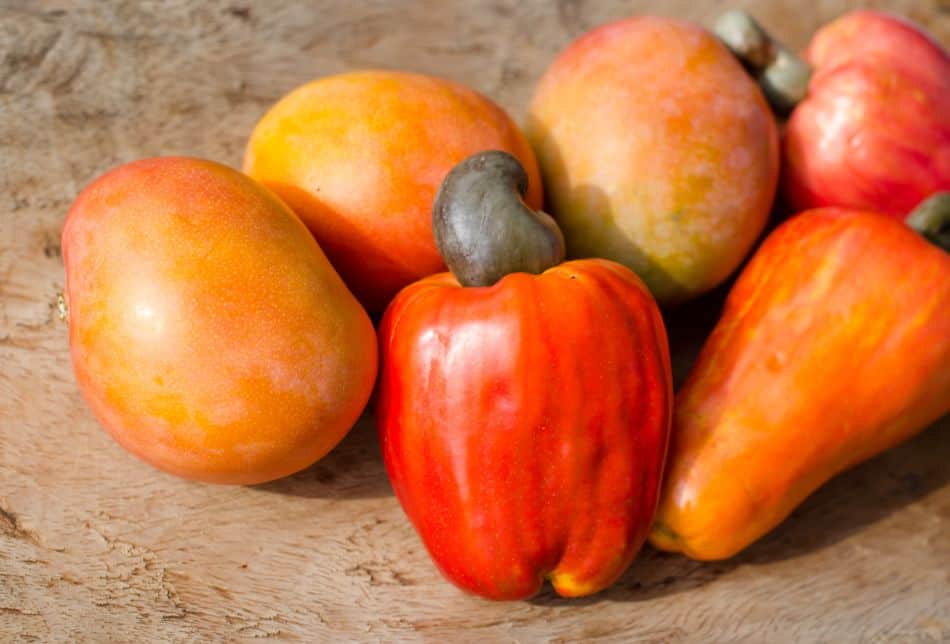
It is often used to make juices, jams, and chutneys. The fully developed cashew apple can be consumed raw, cooked in curries, or fermented to produce vinegar or an alcoholic beverage.
The fruit, native to northeastern Brazil, was first described by European explorers.
Cashew apple offers abundant vitamin C and is a good source of vitamin B1, B2, fiber, calcium, and phosphorus.
10. Cloudberry
Cloudberry is a fruit that resembles a raspberry and is native to the arctic regions of Europe, Asia, and North America.
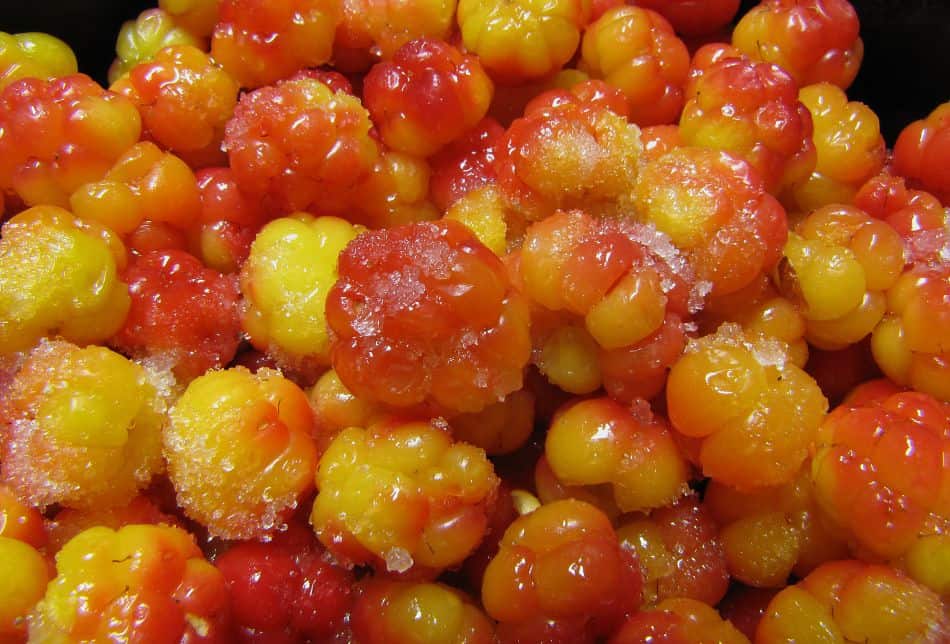
Because they are uncommon and only thrive in cool, temperate climates, some nations consider cloudberries an endangered species.
It has an amber hue and is a distinctive blend of acidic, flowery, and tart flavor notes. Cloudberry contains nutrients like vitamins A, and C, calcium, iron, riboflavin, and thiamin.
Fact: They are sometimes called “bakeapples” because these were traditionally used to make pies and taste similar to baked apples.
11. Crab
Up next on our list of red food items is a shellfish.
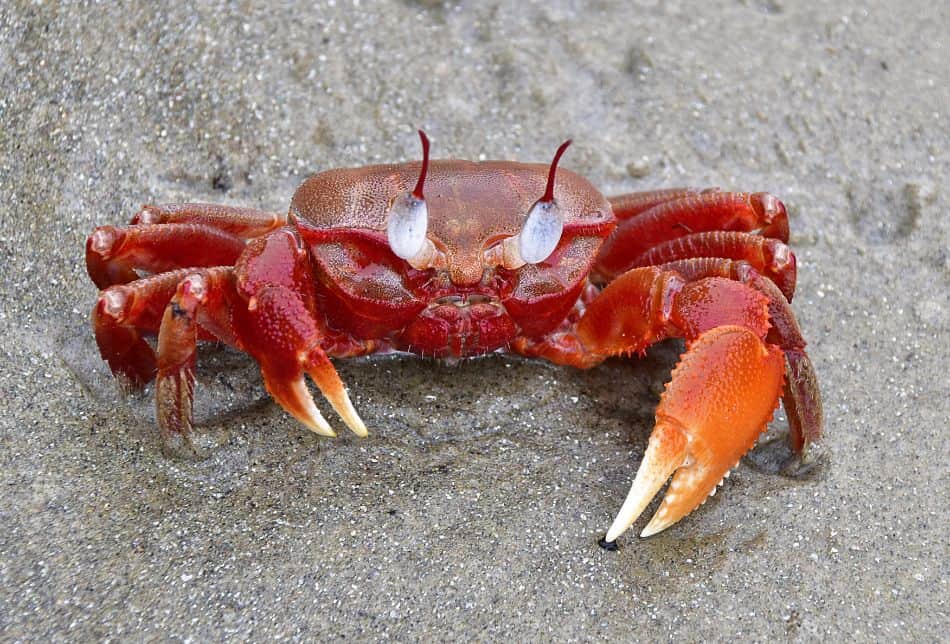
Crabs are characterized by their small size and hard shell. There are more than 4,500 species of crabs.
Crabs have a wide range of colors, depending on the species. The most common colors are muddy green, blue, and brown. However, once cooked, they transition into bright red.
The first ever evidence of a crab feast dates back to the 1200s. They are an excellent source of protein, contain no carbohydrates, and are low in fat.
12. Goji Berries
Goji berry, also called the wolfberry is native to China.
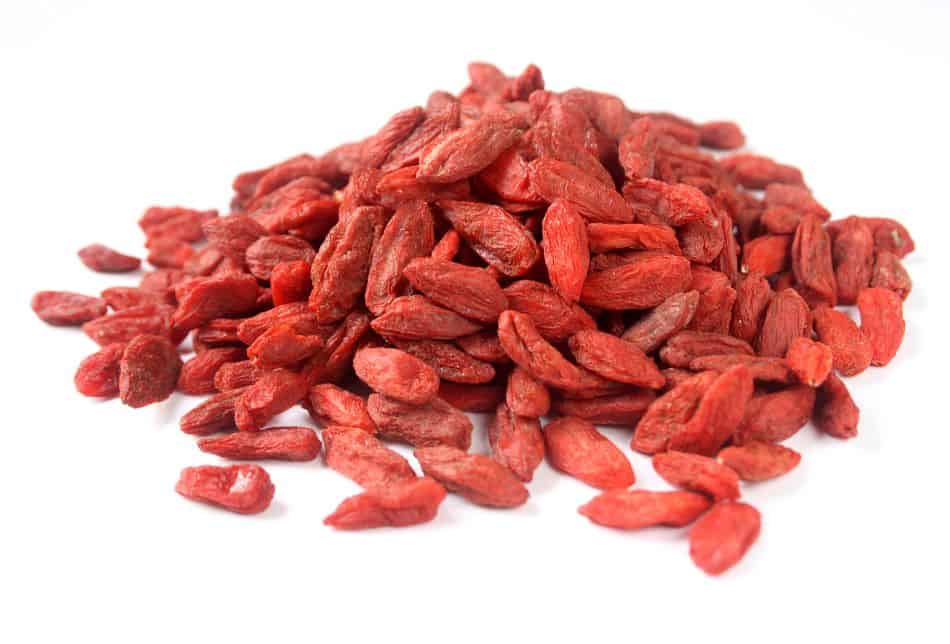
It is a vivid orange-red fruit, small and oblong, with a slightly chewy texture.
You can enjoy goji berries as they are. However, they are used as herbal tea and in Chinese soups. These berries can also be consumed, dried, or powdered and used in many recipes.
Goji berries contain sufficient antioxidants, such as vitamins A and C, and protein, fat, carbs, and fiber.
13. Ham
Ham is cured pork made from the hind leg of a pig and is bright red.
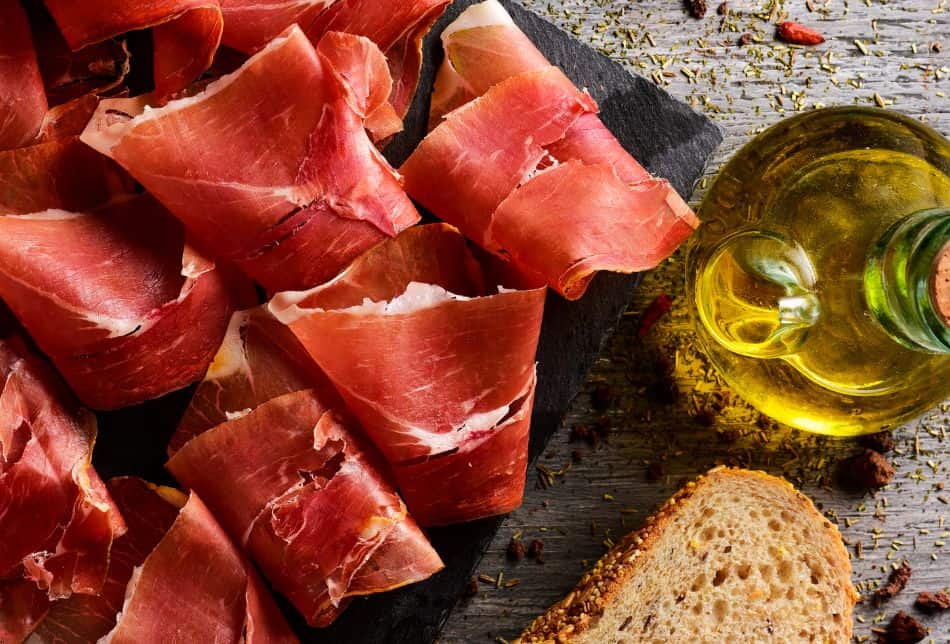
There are many different types of ham, such as prosciutto, serrano, and Jamón Ibérico.
Discovered during the Etruscan civilization, they are a popular ingredient in several dishes, such as pasta, pizza, and sandwiches, and can also be eaten on their own as an appetizer.
Hams are high in protein and fat. They are also a vital source of vitamins and minerals, such as selenium.
14. Hawthorn Berry
Hawthorn berries belong to the Crataegus genus and are native to Europe, North America, and Asia.
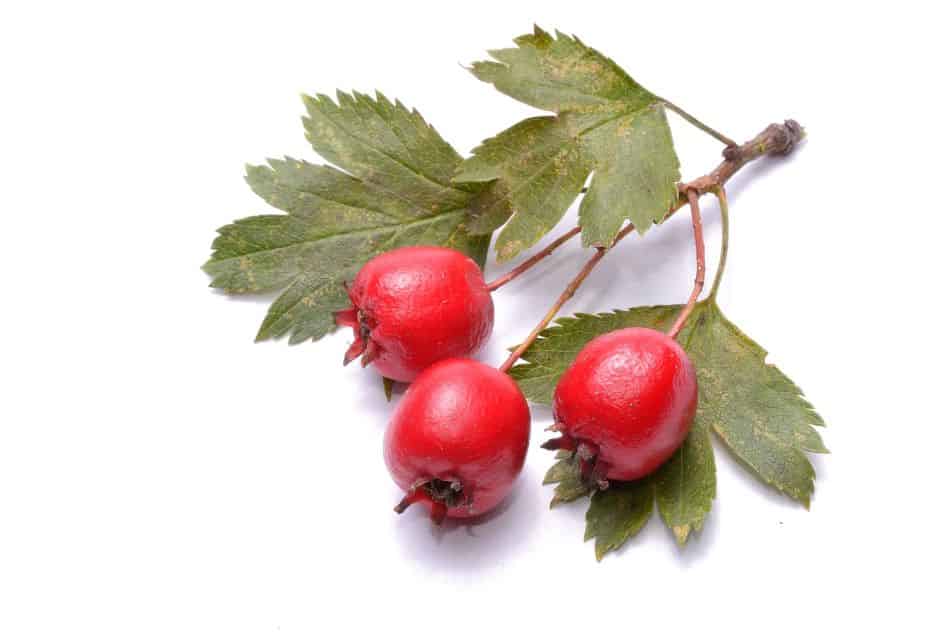
These are petite fruits that ripen on trees and shrubs. They have a subtle sweetness and an acidic, tangy flavor.
Hawthorn berries’ colors range from yellow to deep red and are often used in herbal medicine.
These berries are loaded with nutrients and contain iron, manganese, vitamin B1, calcium, and dietary fiber.
15. Hibiscus Tea
Hibiscus tea is brewed using the dried flowers of the hibiscus plant.
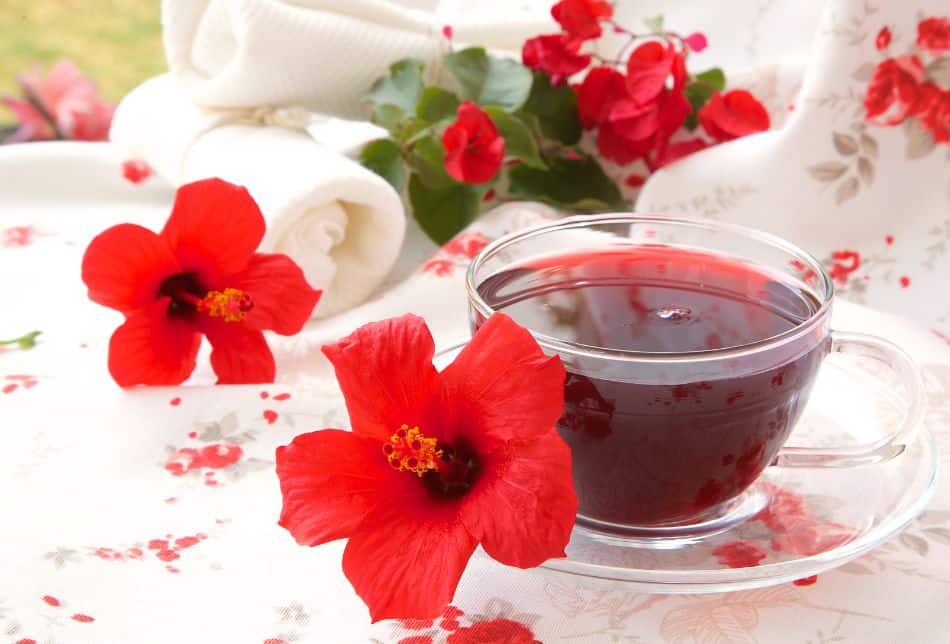
It has a tart, cranberry-like flavor and can be enjoyed hot or cold.
Also called by its scientific name Hibiscus sabdariffa, the pink-red colored healthy beverage originated from North Africa and Southeast Asia.
Its tea is well known for having a lot of vitamin C and calcium, phosphorus, iron, and riboflavin.
16. Jujube
Jujube, also known as red date or Chinese date, is a fruit native to South Asia. It was discovered around 9000 BC.
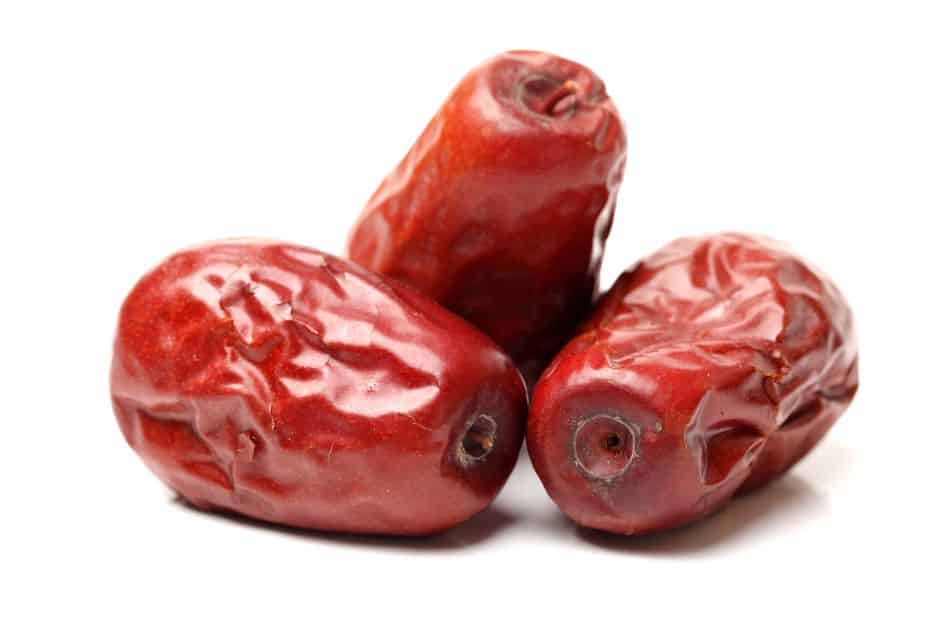
Jujube fruit is delicious and tiny. They taste like dates when dried and have a chewy texture. These turn dark red or purple when ripe.
Jujube fruits are particularly high in vitamin C and have trace levels of other vitamins and minerals. They are also a good source of iron, fiber, and potassium.
17. Ketchup
Ketchup is a popular sauce made from tomatoes, vinegar, sugar, and spices. It is used on various foods such as hamburgers, french fries, and hot dogs.
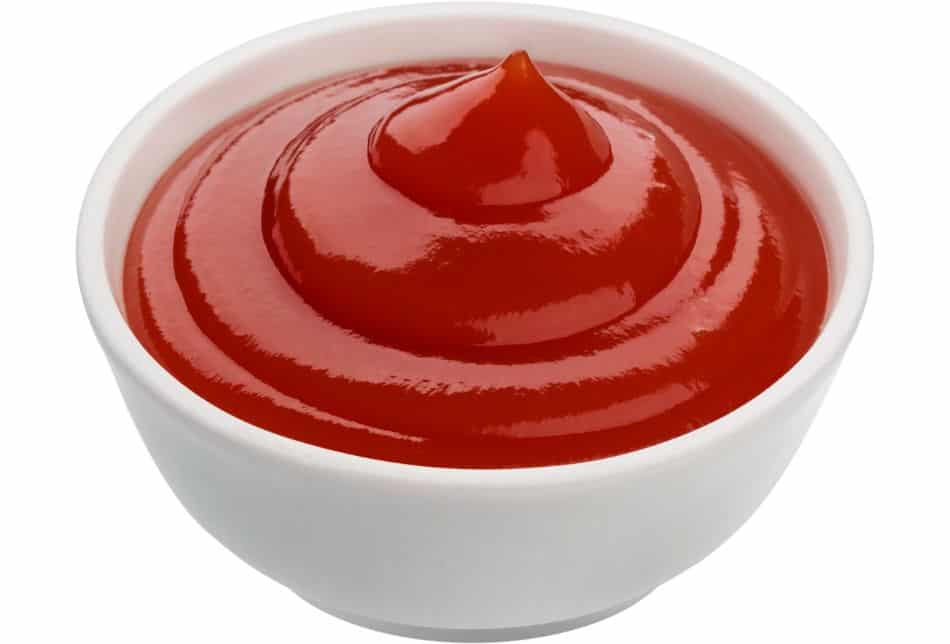
Ketchup was first made in China in the early 18th century. The term is derived from the Hokkien Chinese word, kê-tsiap.
However, James Mease, a chemist, published the first-ever documented tomato ketchup recipe in 1812.
Cholesterol and saturated fat levels in ketchup are extremely low. It is a good source of potassium, vitamin A, and vitamin C
Fun fact: National Ketchup Day is on June 5.
18. Kidney Beans
Kidney beans are one of the most common types of beans. They got this name because of their resemblance to the human kidney.
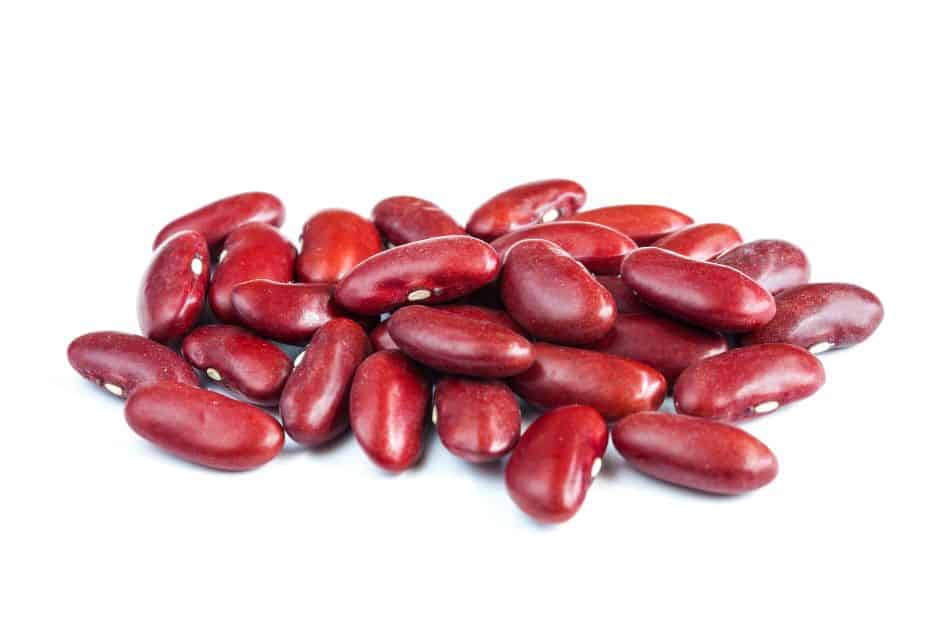
They are supposed to have originated from Peru. Kidney beans belong to a larger class of plants known as “common beans,” which were first grown 8,000 years ago.
Kidney beans can be any shade, from a very faint red to one so dark it almost looks purple.
Several vitamins and minerals, like folate, vitamin K1, iron, manganese, molybdenum, potassium, and copper, are abundant in kidney beans.
19. Lingonberry
Lingonberries are tiny red berries that have earned the moniker “superfruit” due to their high nutritional content and possible health benefits.
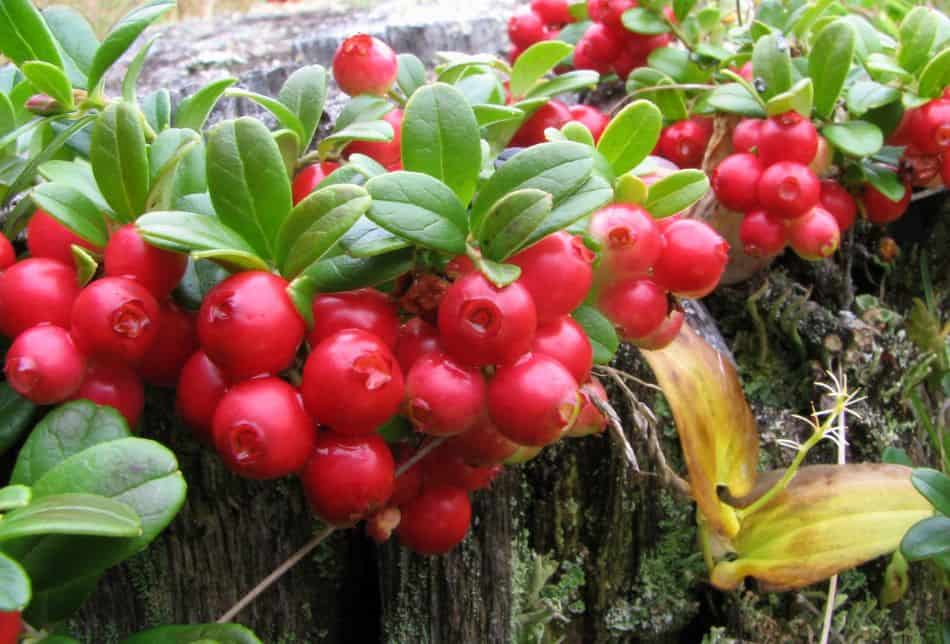
Small, sour red lingonberries originated in Scandinavia.
Lingonberries have a tart, cranberry-like flavor and are often used in jams, jellies, and pies. They can also be consumed dried or fresh.
The berries are a vital source of vitamins and minerals, such as vitamin C, fiber, and manganese.
20. Lobster
Often considered a supreme delicacy, Lobsters are primarily shellfish. These crustaceans have large claws with cylindrical bodies.

Lobster as a food item was first consumed along the shores of Britain, South Africa, almost 100,000 years ago.
They are red and are most commonly cooked and served with drawn butter. Lobsters can also be eaten raw, grilled, or boiled.
In addition to being a good source of copper and selenium, they also have minor amounts of omega-3 fatty acids, vitamin B12, and vitamin E.
21. Lychee
Indigenous to Southeast and Southwest China’s Guangdong, Fujian, and Yunnan provinces, the lychee is a tropical tree whose cultivation dates back to the 11th century.
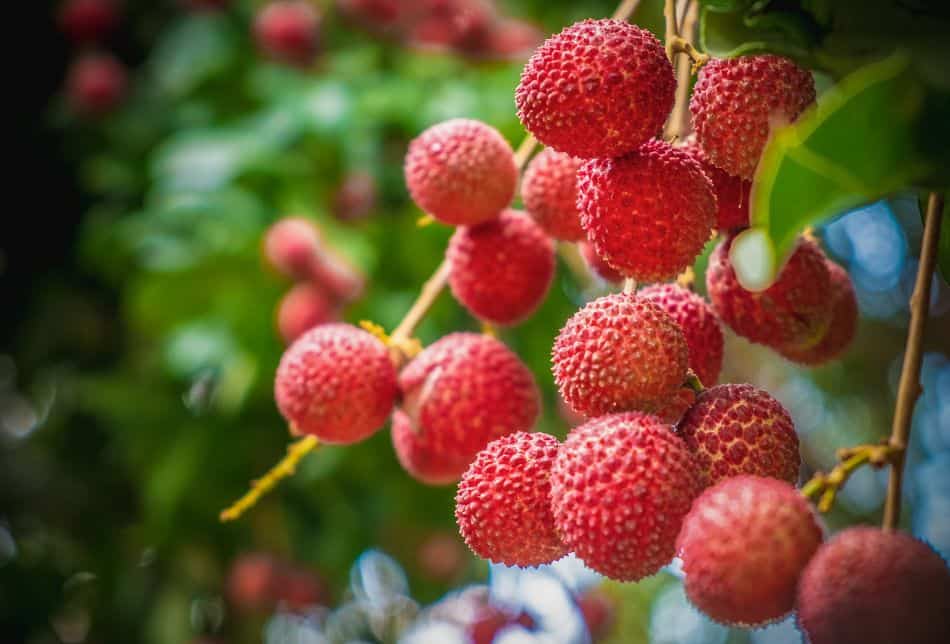
It is the size of a grape and has a rough, red-brown exterior with a white fleshy interior. Lychees have a sweet taste with a hint of sourness.
Lychees are often used in desserts, such as ice cream and pudding. They can also be eaten fresh or canned.
They have minimal sodium, cholesterol, and saturated fat content. Additionally, lychee is a very good source of vitamin C and copper.
22. Marinara Sauce
Majorly used in Italian dishes, Marinara sauce is a type of tomato-based sauce.
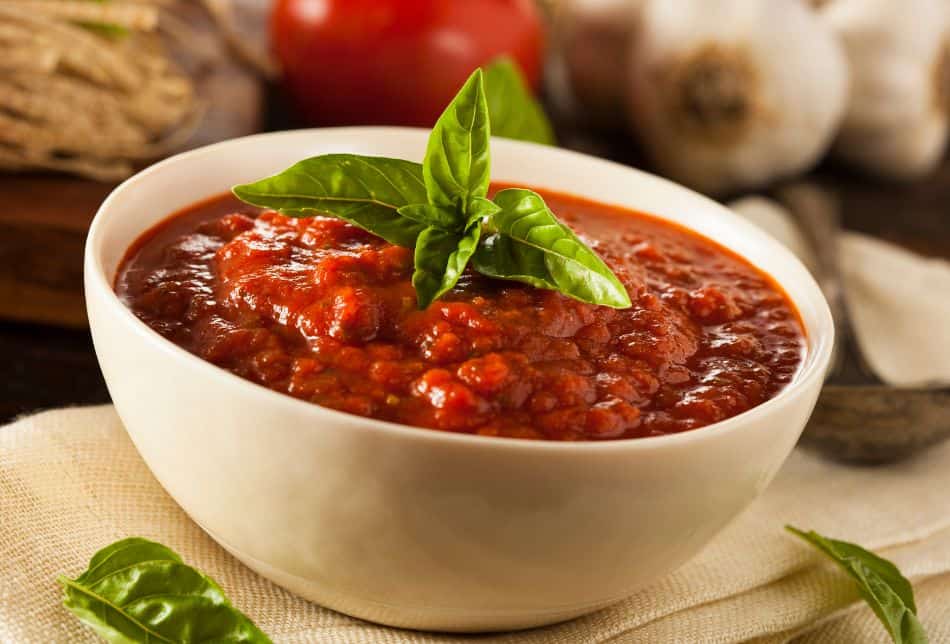
It is prepared with tomatoes, garlic, herbs, and onions.
This sauce was first made by the sailors or “mariners” in Naples, Italy, in the 16th century, who would add fish to the sauce to make it more protein-rich and nutritious.
Usually, a medium dark shade of red, Marinara sauce can be used as a dipping sauce on pizzas or pasta dishes.
Marinara sauce is packed with nutrients such as lycopene, vitamin C, potassium, folate, and vitamin K.
23. Mulberry
The next food on our list, Mulberries, is a fruit closely related to blackberries and raspberries. They possess a subtle, sweet flavor.
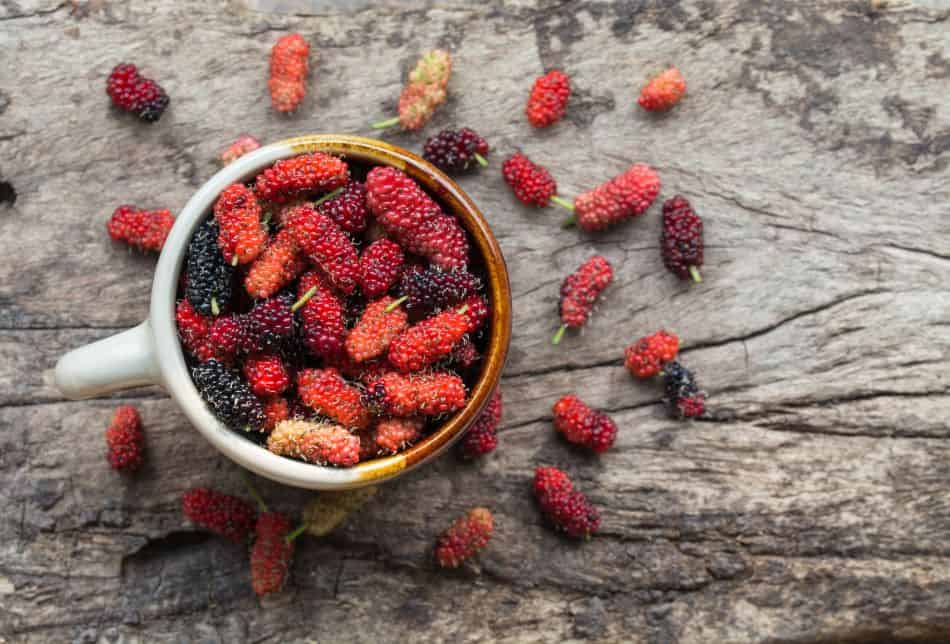
Originally from eastern and central North America, the De Soto expedition used mulberry fruits for the first time in history around the middle of the sixteenth century.
They can ripen to a rich purple, black, red, or white color; and resemble an elongated blackberry in appearance.
Mulberries are rich in iron and vitamin C and have a fair quantity of potassium, vitamin E, and vitamin K.
24. Muntingia
Muntingia, also known as the Jamaican cherry, is a tropical fruit tree. It was discovered in the Philippines in the late 19th century.
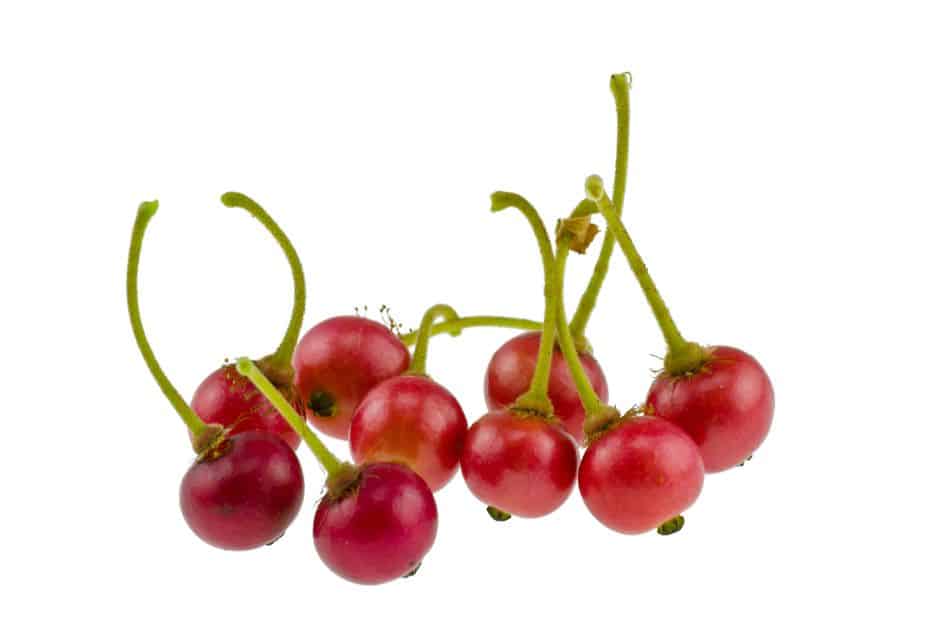
Native to the Neotropics, from southern Mexico to Bolivia, the fruit of the Muntingia tree are edible and are small and round with red or yellow flesh.
They have a sweet flavor note with a hint of sourness.
These fruits are high in nutrients and are a rich source of minerals, hydration, and carbs. Even the tree’s leaves are rich in flavonoids and vitamin C.
25. Paprika
Paprika is a universal seasoning made from a mixture of dried peppers in the Capsicum annuum family.
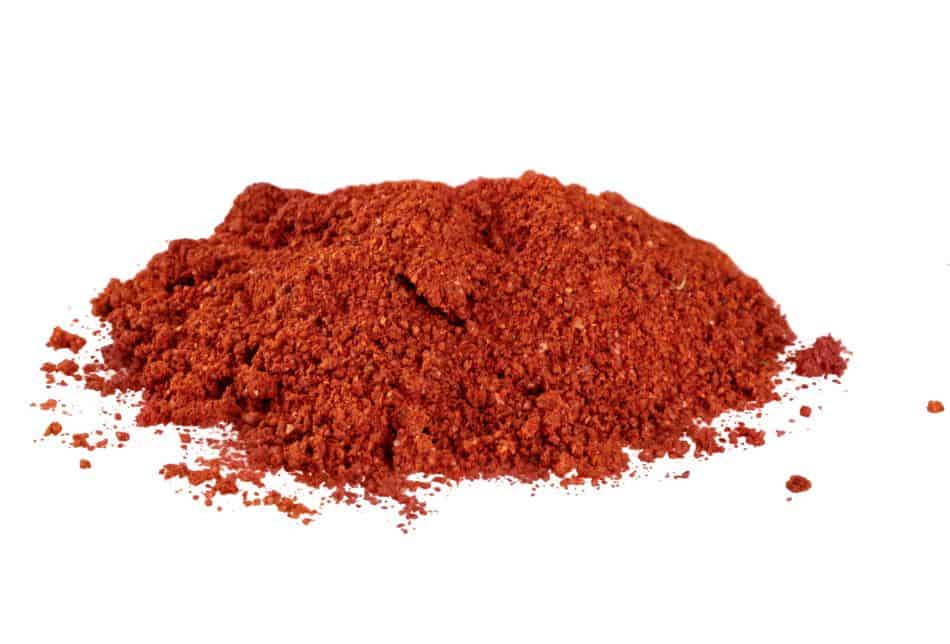
It is made from sweet or hot peppers, and the resultant powder can range in color from bright red to deep crimson, depending on the type of pepper used.
Paprika is native to North America, in particular Central Mexico. Christopher Columbus discovered it in 1493.
This spice is a good source of copper, calcium, manganese, thiamin, phosphorus, and magnesium. Paprika can also be used as a natural food coloring.
26. Pepperoni
A popular type of salami, pepperoni, is typically made from pork and beef. It has a mildly spicy taste.
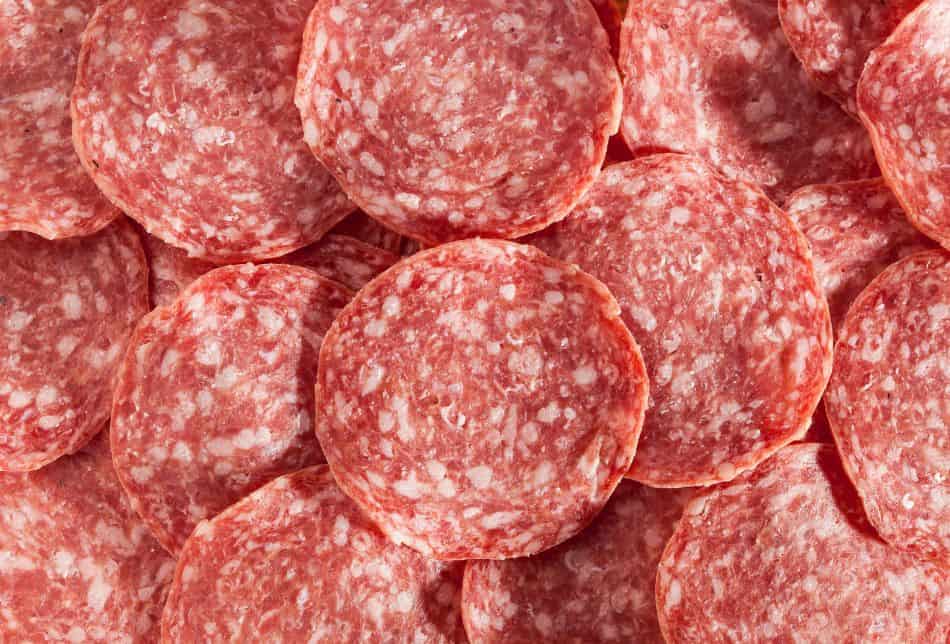
Pepperoni originated in Italy and was brought to the United States by Italian immigrants in the early 1900s.
In its natural state, pepperoni is soft, faintly smoky, and bright red. It is commonly used as a pizza topping but can also be eaten alone as a snack.
Pepperoni is high in saturated fat and sodium but is also a good source of protein, B vitamins, and zinc.
27. Pink/Red Grapefruit
A hybrid of the orange and the grapefruit, pink grapefruit is a citrus fruit. They are typically smaller and sweeter than regular grapefruits.
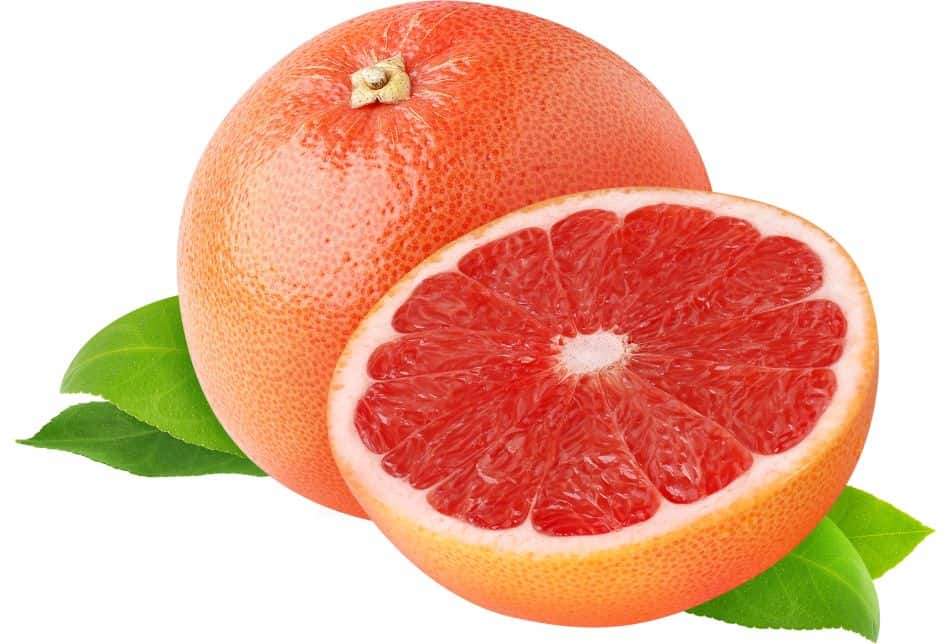
The fruit’s skin is a rich shade of yellow-orange. Depending on the tree species, the flesh can range from white to pink to deep red.
The pink grapefruit was first discovered in 1823 on the island of Barbados.
It is an excellent vitamin C and vitamin A source and contains fiber, thiamine, and potassium.
28. Plum
Plums are oval-shaped, juicy fruits that turn reddish, purple, or yellow when ripped and have a flattish pointy stone.
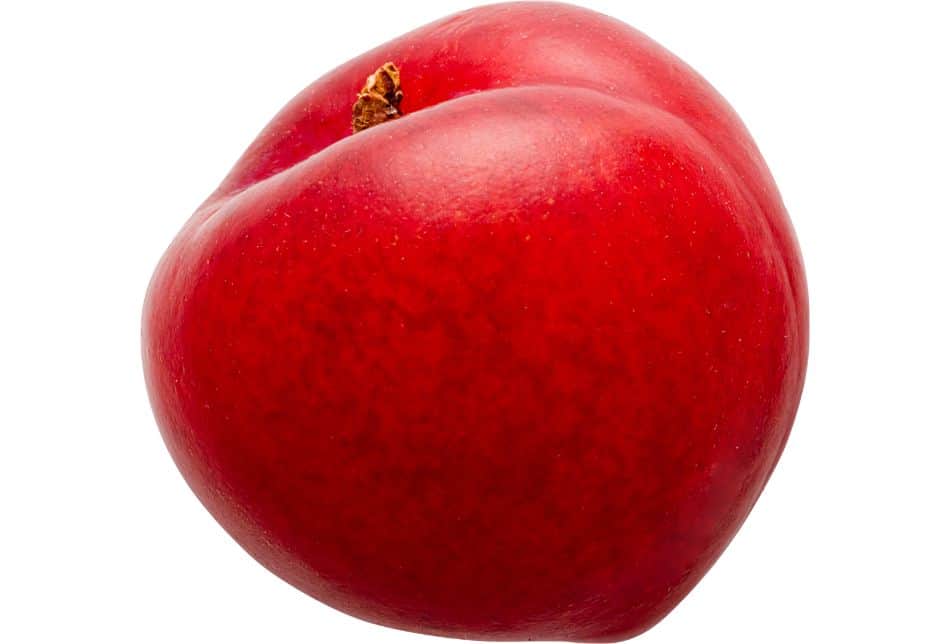
They have a sweet taste with a mildly tart flavor. Plums can be eaten fresh or used in recipes such as pies, jams, and wines.
This fruit is native to Asia and has been cultivated for thousands of years. It was introduced to Europe in the 1st century AD by the Romans.
Plums are highly nutritious and contain vitamins A, C, and K, providing potassium, copper, and manganese.
29. Pomegranate
Pomegranates are a fruit with a leathery exterior and many edible seeds. The seeds are surrounded by a sweet, red flesh and are used in various culinary dishes.
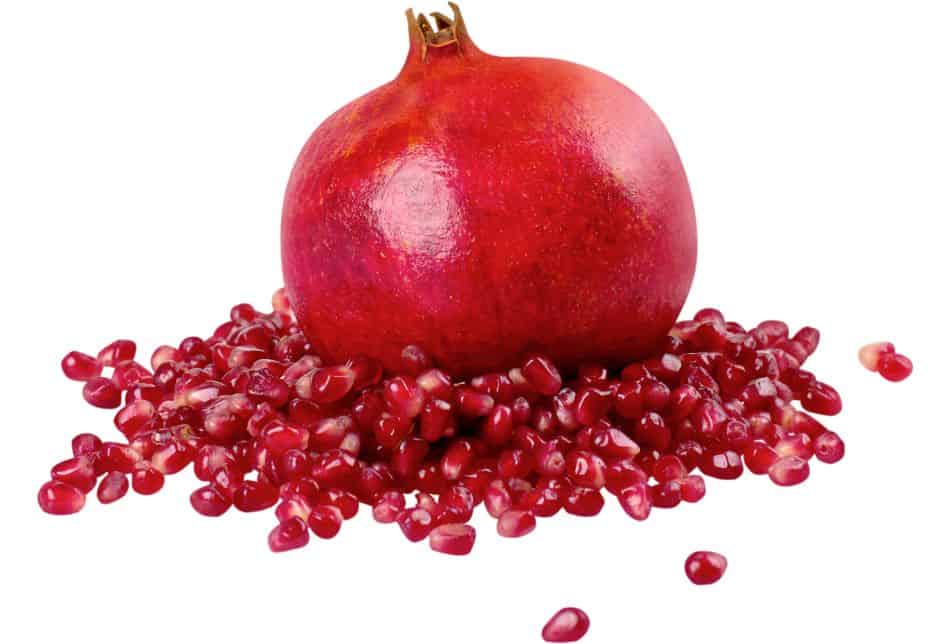
This fruit is native from the Himalayas in northern India to Iran and is believed to have been cultivated about 8,000 years ago throughout the Mediterranean region.
Pomegranates are an excellent source of folate and vitamin K. They also contain fiber and calcium.
Fact: Pomegranate literally translates to “apple with many seeds.”
30. Prickly Pear
Prickly pear is the common name for a cactus fruit that grows on the Opuntia cactus. It has a tough exterior with tiny, sharp spines.
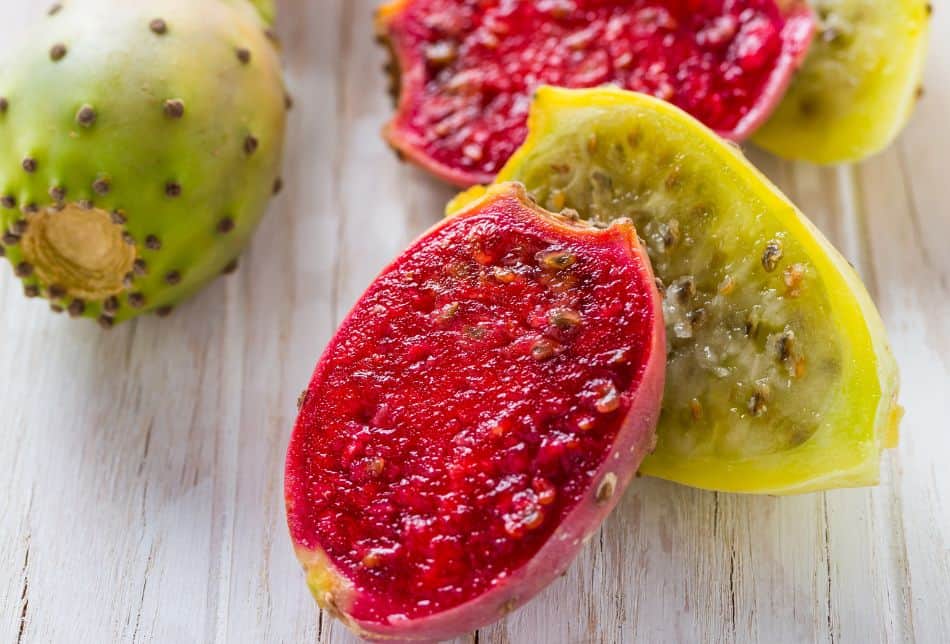
The interior flesh of the fruit is edible and ranges in color from deep red to purple. It has an intensely sweet flavor.
Prickly pear is said to have originated in Central Mexico and parts of the Caribbean region. However, Governor Phillip is credited with introducing the fruit in 1788.
This curious fruit is a good source of Vitamin C, E, K, beta-carotene, potassium, and phosphorus.
31. Radicchio
Radicchio is a leafy vegetable with a bright red color. It is a member of the chicory family.
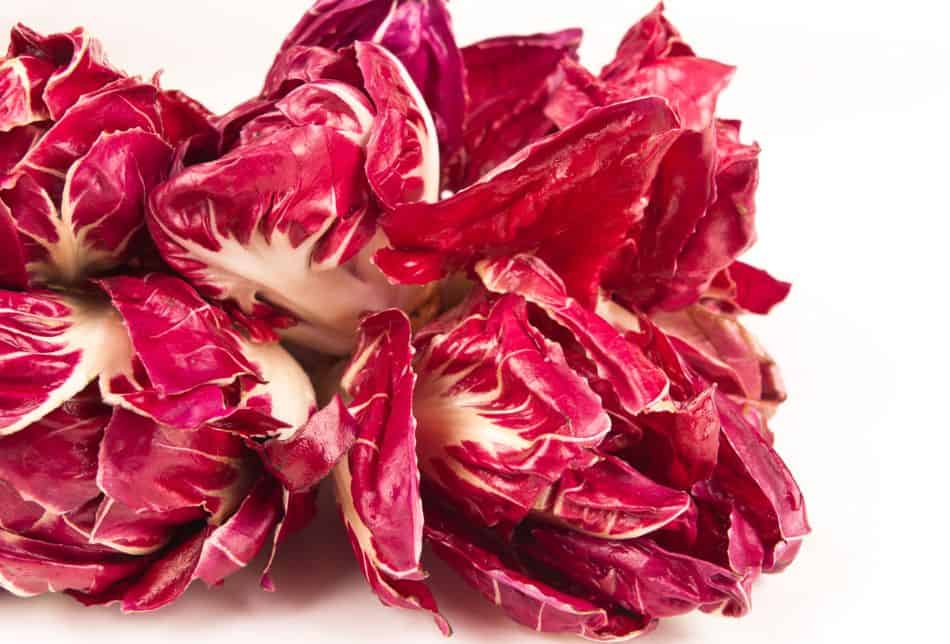
This vegetable is native to Italy, and its cultivation can be traced back to the 15th century. The Belgian agronomist Francesco Van den Borre created the first deep-red radicchio in 1860.
When eaten uncooked, radicchio has a crunchy texture and peppery flavor. Often used in salads, it is combined with sweet or acidic components.
Radicchio has fewer calories and is high in dietary fiber, such as vitamin B6, phosphorus, iron, zinc, and magnesium.
32. Radishes
Belonging to the Brassica family, red radishes are a root vegetable. They are natively from Europe and Asia and are reddish-purple.
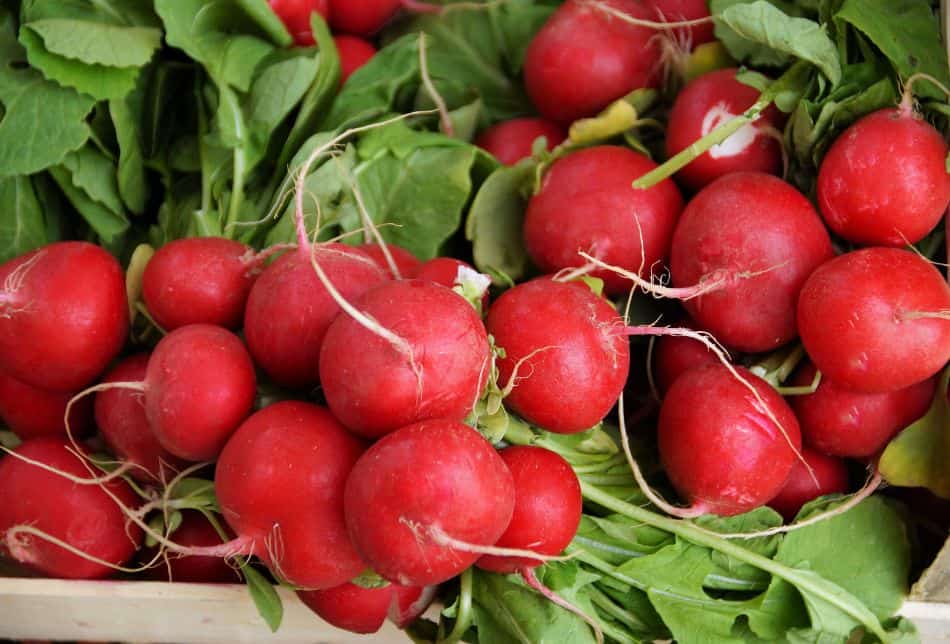
Red radishes can be eaten raw, cooked, or pickled. They are also used as a garnish or as part of a salad.
This vegetable was reportedly discovered in Germany in the 13th century. Red radish is a good source of folate, vitamin B-6, magnesium, riboflavin, and niacin.
33. Rambutan
The rambutan is a tropical fruit with a red or yellow hairy exterior and a white fleshy interior with a large seed. It has a sweet and creamy taste.
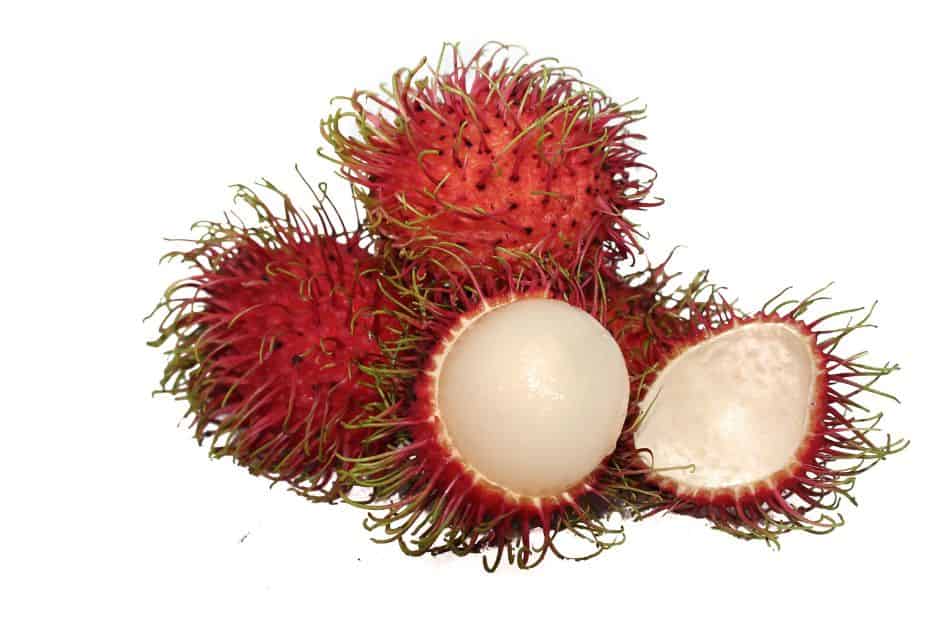
Rambutan is native to Malaysia and Indonesia. Arab traders discovered the fruit between the 13th and 15th centuries.
Rambutans are an excellent source of potassium and Vitamin C. They also contain small amounts of copper, vitamin B9/, iron, and manganese.
Fun fact: The word rambutan is derived from the Malay word meaning “hair.”
34. Raspberry
Raspberries are red, soft fruits from Turkey and spread over Mediterranean Europe.

These fruits have a hollow center and grow in clusters on a bush. Raspberries have a sweet taste with a mildly tart flavor.
They are an excellent source of antioxidants such as vitamins C and E carotene, zeaxanthin, selenium, alpha and beta choline, and lutein. Raspberries also contain omega-3 fatty acids.
35. Redcurrant
The redcurrant is a shrub’s fruit. It has a spherical shape, translucent red skin, and a bittersweet flavor and is used in various culinary dishes.
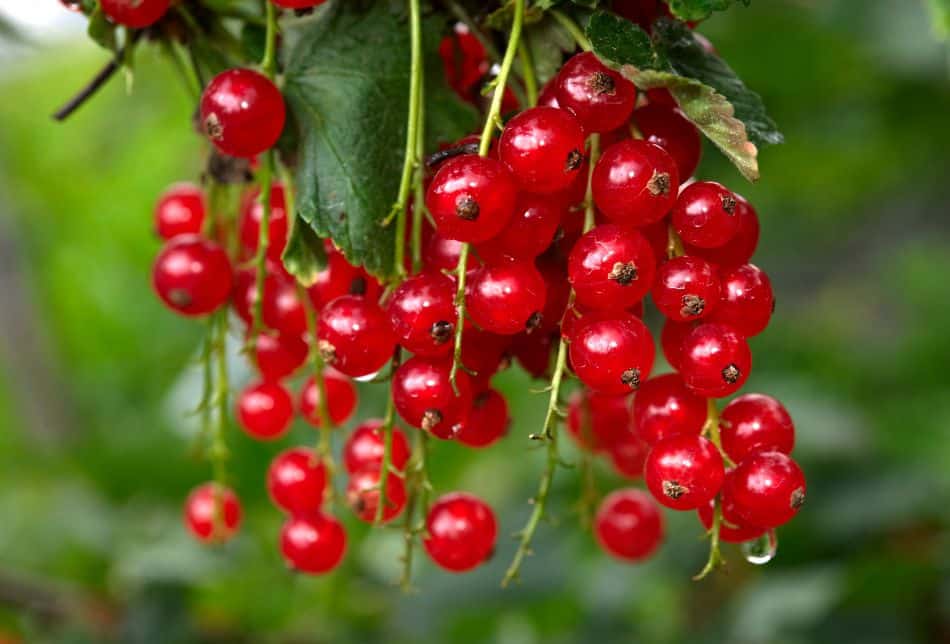
Redcurrant is native to western Europe. However, cultivation started in the 16th century but took off in France and Belgium in the 17th.
Redcurrants are an excellent source of macronutrients and are additionally high in fiber, vitamin C, K, antioxidants, and iron.
36. Red Banana
Red bananas are a variety of banana that has reddish-purple skin and cream-colored flesh. They are Native to Southeast Asia and are officially known as Red Dacca.
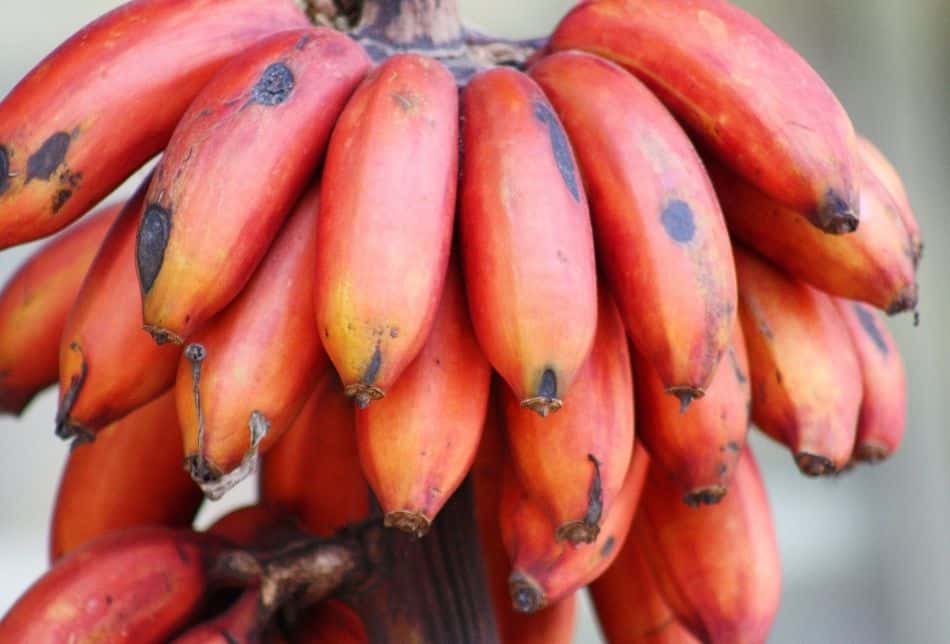
Sweeter and less starchy than yellow bananas, red bananas are rich in zeaxanthin and lutein.
Also, they are an excellent source of vitamin B6, potassium, iron, magnesium, and vitamin C.
Fact: Red bananas were the first-ever type of bananas to be sold in the Toronto market during the 1870s and 1880s.
37. Red Bell Peppers
Consumed by humans since about 7,500 BC. Red bell peppers are native to Central America, Mexico, and South America.
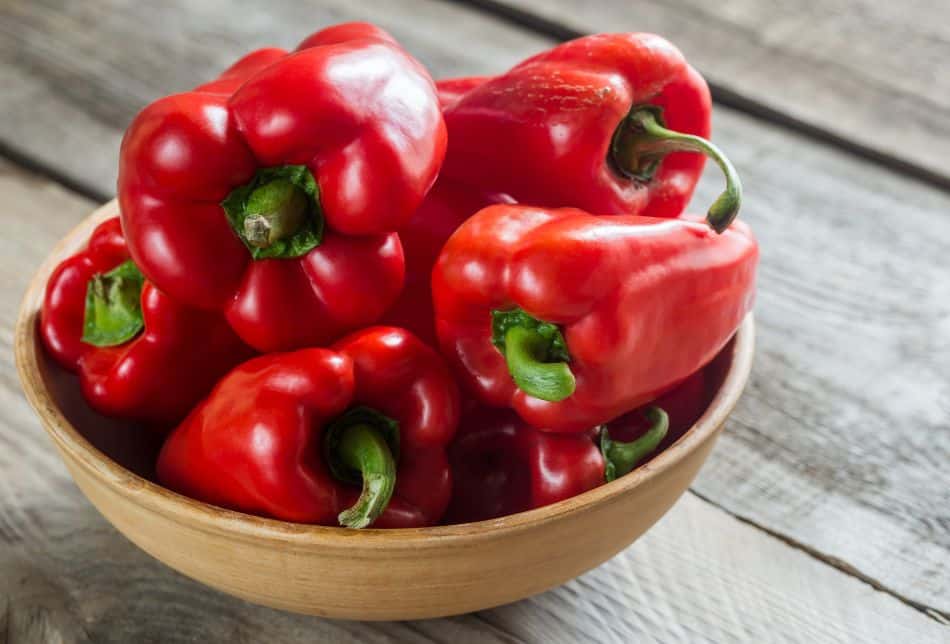
Red bell peppers are typically fully grown versions of bitter green bell peppers. They have a bright red color with a slightly sweet flavor.
In addition to being rich in potassium, vitamin K1, vitamin E, and vitamin A, red bell peppers also include folate and vitamin C.
These peppers can be consumed raw and can also be roasted, grilled, or fried.
38. Red Chili Peppers
Native to Mexico and South America, red chili peppers are fiery orange-red.
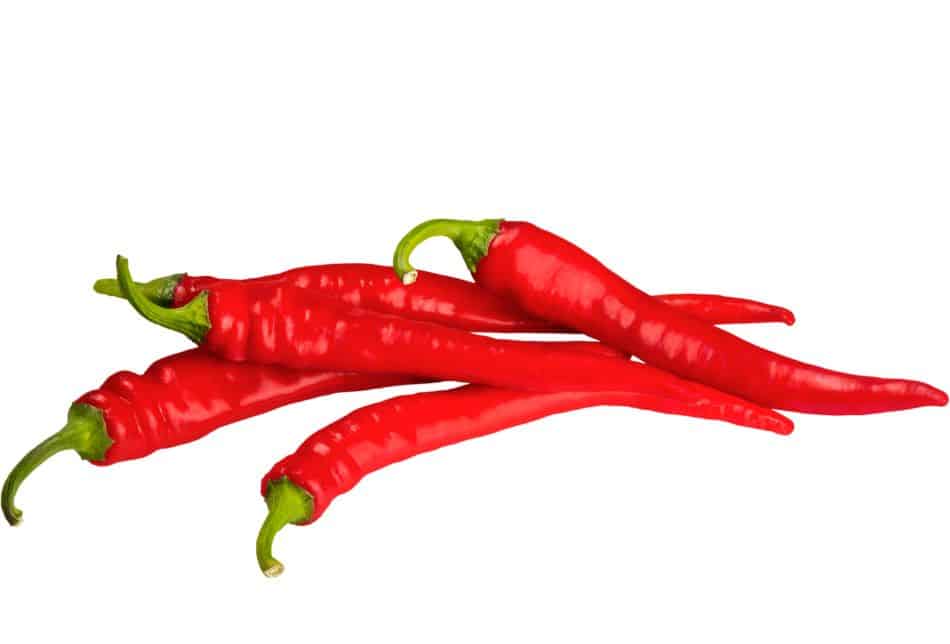
The cultivation of red chili peppers can be traced back to east-central Mexico, around 6,000 years ago.
Red chili peppers are a vital source of beta carotene. They also have high amounts of dietary fiber, such as thiamin, riboflavin, and niacin.
Fact: The spiciness of chili pepper is measured on the Scoville Scale.
39. Red Delicious Apples
Red delicious apples are the most famous type of apples. They have deep red skin with a crisp, sweet flavor.
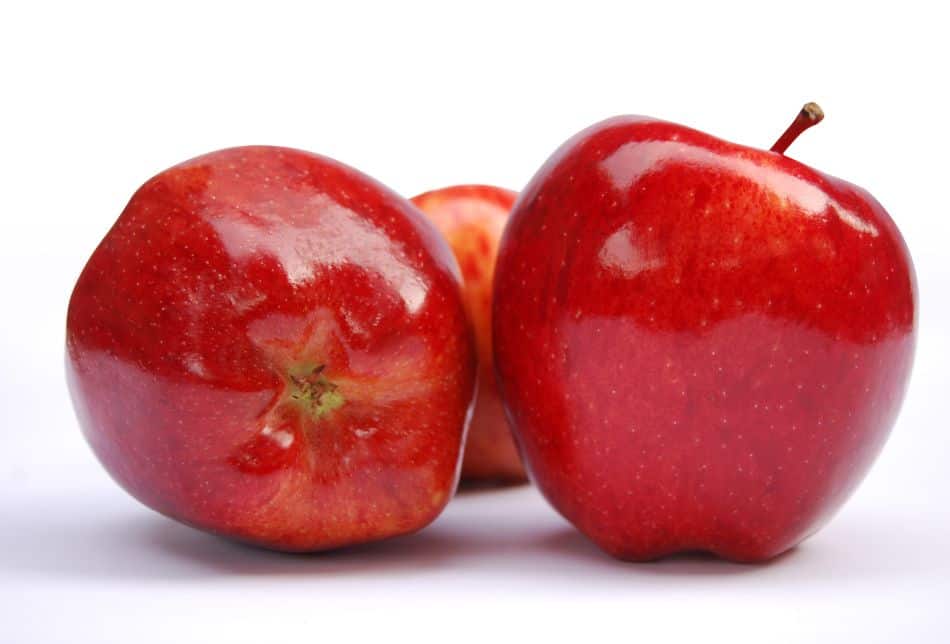
The fruit was first grown in Iowa in the 1880s and was called the ‘Hawkeye.’ It was renamed Red Delicious in 1916.
Red delicious apples are loaded with vitamin C and nutritional fiber. They provide additional minerals such as sodium, vitamin A, and a fraction of calcium and iron.
40. Red Dragon Fruit
Red dragon fruit is a cactus fruit with vibrant red skin and white flesh with black seeds. It has a sweet and sour taste.
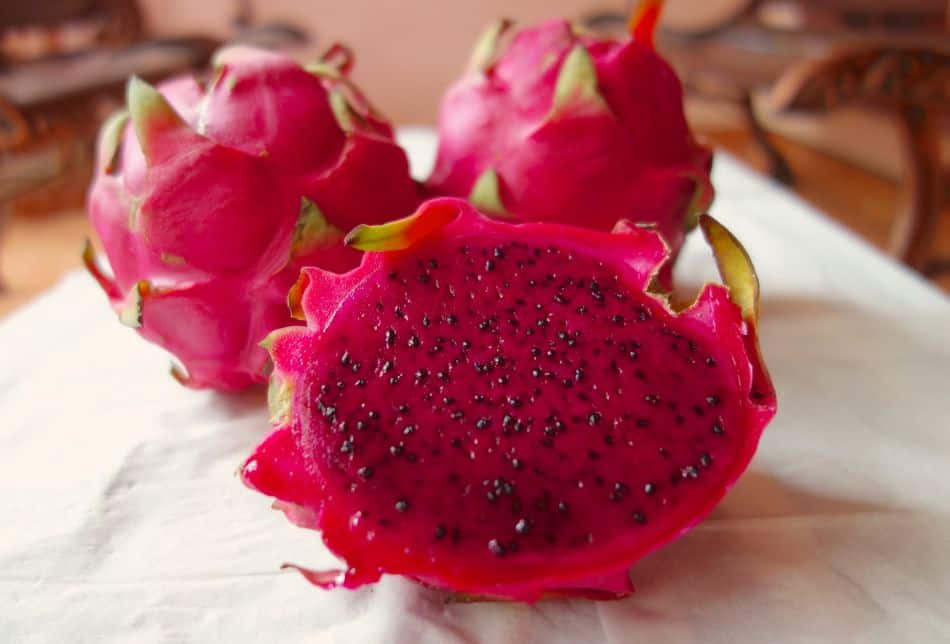
This fruit is native to Mexico and South America and was first introduced to Vietnam in the early 1800s.
Red dragon fruit is an excellent source of antioxidants, fiber, and vitamins C and E. It also contains small amounts of magnesium and iron.
Fact: Red dragon fruit plant is also known as the “Queen of the night” because it blooms from evening to midnight.
41. Red Gooseberry
Red gooseberry is a fruiting shrub with spiky stems and dark, luscious red currants. It is also known as Hinnonmaki red or Hinno red.
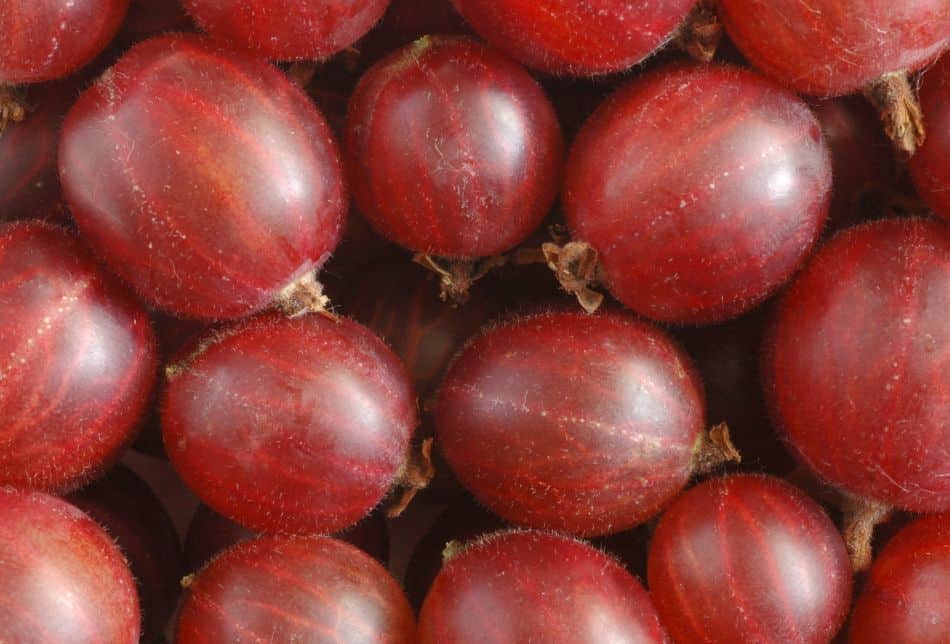
This fruit is native to Europe and western Asia. However, its cultivation was first documented in England in the 13th century.
Red gooseberries are high in dietary fiber, such as manganese, vitamins C, B6, B5, copper, and potassium.
Fact: These oval-shaped fruits are closely related to currants.
42. Red Grapes
Red grapes are small, round fruits that have thin skin and flesh. The shade of the skin can range from deep purple to red, and the flesh is typically white.
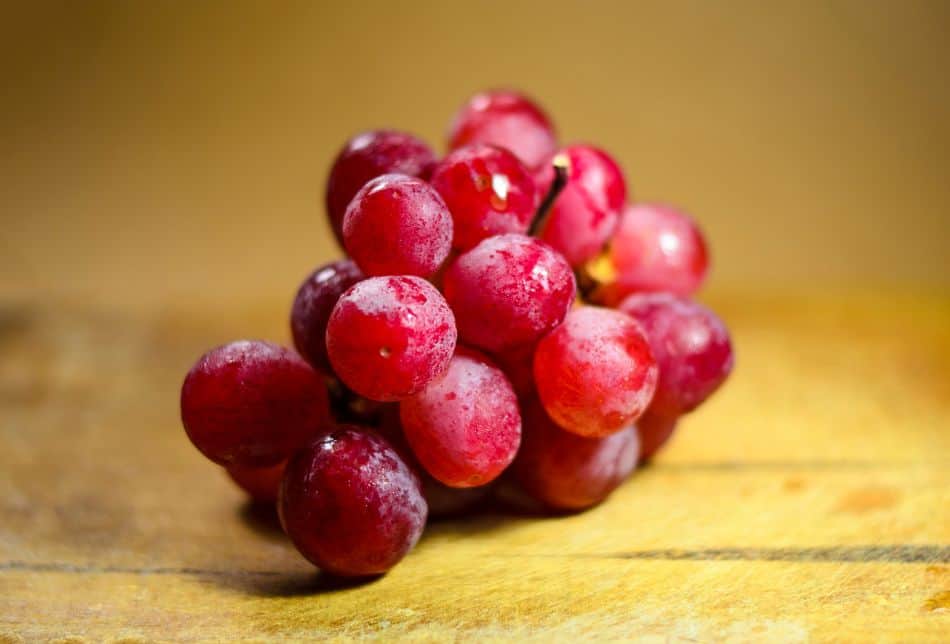
Red grapes are used to make wine, juice, jam, and raisins. They can also be eaten raw as a snack or used as a garnish.
They are believed to have originated in western Asia and the Caucasus and were first harvested during the Paleolithic period.
Red grapes are a great source of vitamin K and copper. Additionally, they are a significant source of vitamin B, thiamine, riboflavin, and B6.
43. Red Peach
A red peach is a circular fruit with sweet, juicy yellow flesh, mildly hairy red-yellow skin, and a sizable seed in the middle.
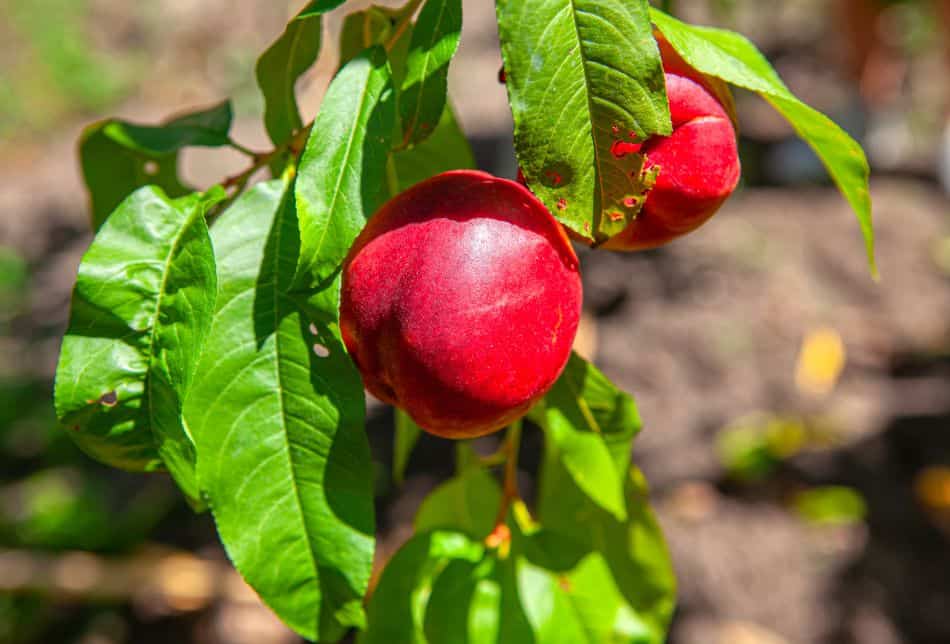
Red peaches are native to China and were discovered before the 11th century.
They are smaller and have a sweeter taste than regular yellow peaches.
These fruits are a good source of antioxidants, like vitamin C, carotenoids, and polyphenols.
44. Red Pear
The red pear belongs to the Pyrus genus. It has a distinct bell shape, and its flesh is white or cream-colored with a reddish hue.
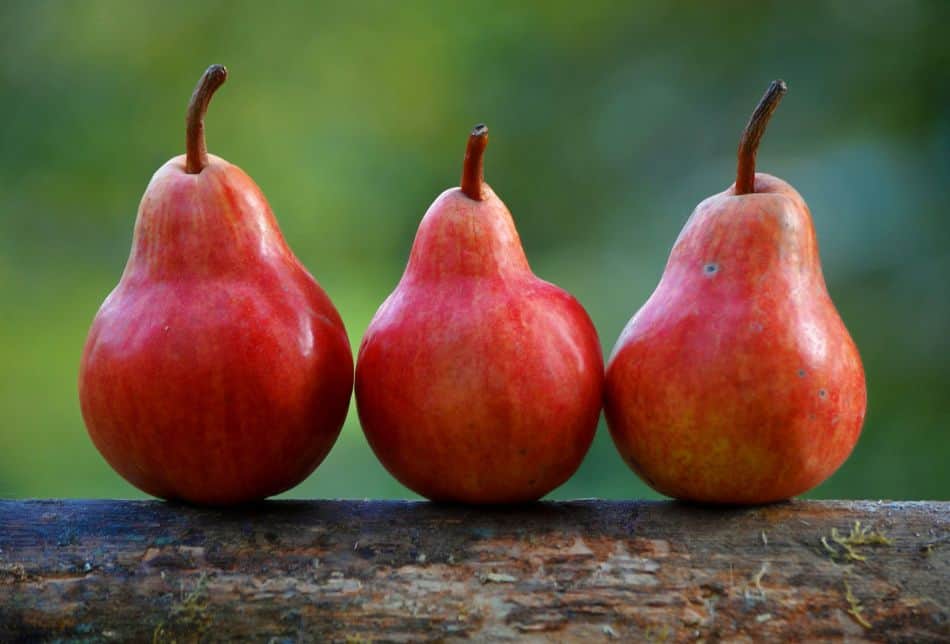
Red pears contain essential vitamins and minerals like vitamins C, K, and potassium. They also supply vitamin B6, iron, calcium, riboflavin, and magnesium in lower amounts.
The first red pear was discovered in the early 1950s near Medford, Oregon.
45. Red Potatoes
Also known as Dakota Chief, red potatoes are a red-skinned early main crop potato variety. They have smooth, red skin with white flesh.
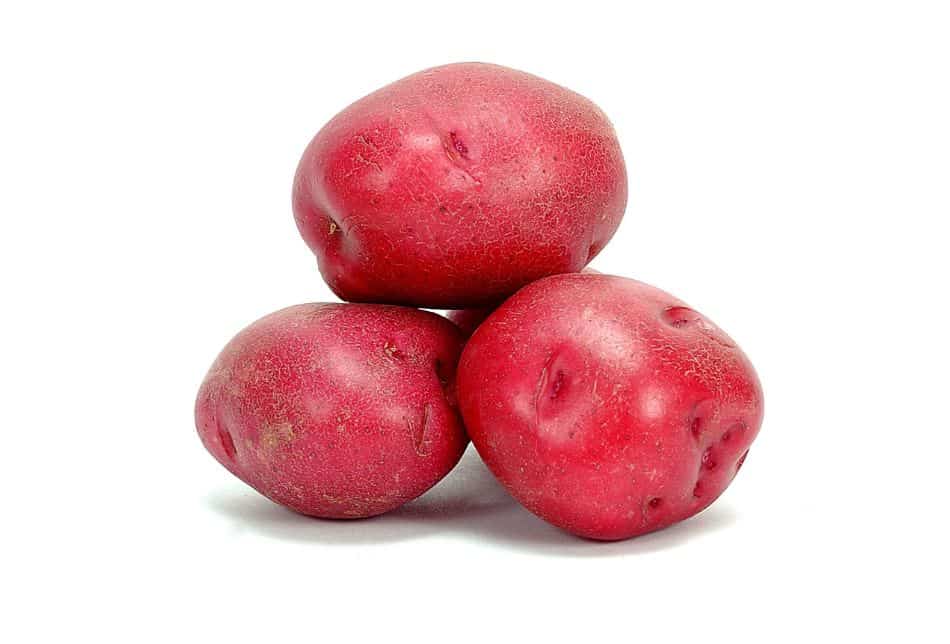
The potato is indigenous to the Andes in Peru and Bolivia. It was first grown by the Incas around 8,000 BC to 5,000 BC in South America.
Red potatoes are a good source of vitamins C and B6 and carbohydrates, potassium, iron, and fiber.
Fact: Much of the nutritional value of the red potato is found in its skin.
46. Red Quinoa
Red quinoa is a nutritious whole grain from the flowering plant Chenopodium quinoa. It has a slightly nutty flavor and a chewy texture.
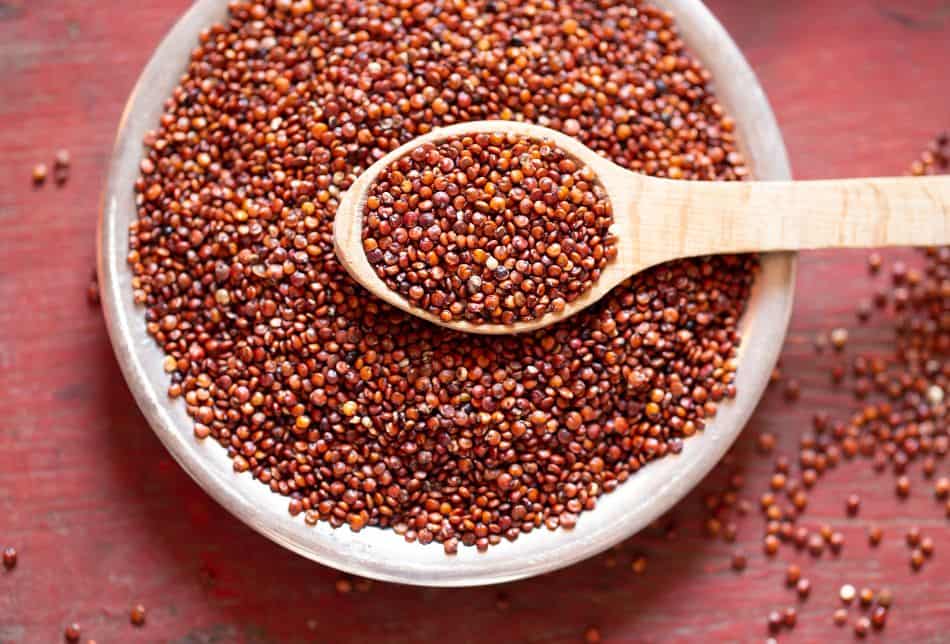
This grain is native to the Andes Mountains in South America. It was first cultivated by the Incas over 5,000 years ago.
Red quinoa is an excellent source of protein, fiber, and magnesium. It is also a good source of iron, phosphorus, and copper.
Fact: Red quinoa is also known as Inca Red because it was the choice for Inca soldiers who felt that the color red gave them courage.
47. Red Rice
Native to Asia and Africa, red rice is a whole grain with a reddish hue and a nutty flavor.
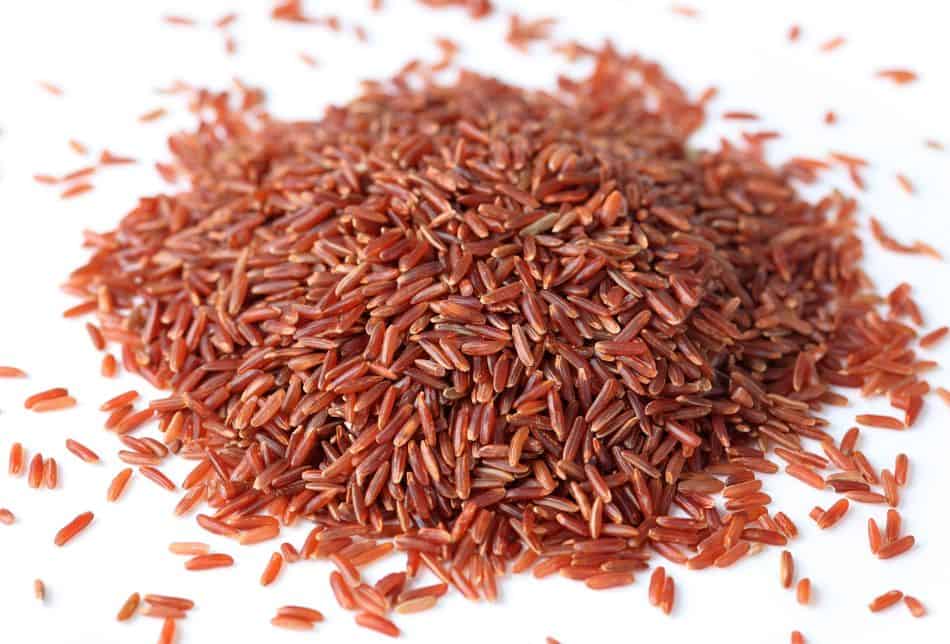
Red rice is typically grown in tropical regions and is often used in Asian cuisine. Its Japonica variant was first cultivated in Japan in the pre-Nara era (710 AD).
Iron and vitamins, found abundantly in red rice, support our body’s ability to produce RBCs (red blood cells). It also contains calcium, magnesium, and zinc.
48. Red Velvet Cake
The next red food on our list is the red velvet cake. It is typically a vanilla cake combined with tablespoons of cocoa powder and red food coloring.

The first red velvet cake recipe was published by a baker named Irma S. Rombauer’ in around 1943. The recipe debuted in the famous cookbook “The Joy of Cooking.”
This delicious cake also contains nutrients like fiber, protein, and potassium.
Fact: The “red color” can also be obtained with natural ingredients such as beetroot juice or hibiscus tea.
49. Red Wine
Red wine is a popular alcoholic beverage made from dark-colored grapes. The wine ranges in color from deep purple to brick red. The taste can be dry, sweet, or fruity.

The production of red wine originated in the Caucasus region around 6,000BC. However, poet Alcman first recorded mention of red wine in the 7th century BC.
Red wine contains vitamins B6, potassium, magnesium, riboflavin, and niacin.
50. Rhubarb
Considered an excellent source of vitamin K1, C, calcium, and manganese, rhubarb is the fleshy, edible stalks of Rheum species that belong to the Polygonaceae family.

The vegetable is native to Asia and was originally used in western civilization 2100 years ago. It has a tangy taste and is red or green.
Raw rhubarb is used in pies and jams. It is also cooked and added to other dishes as a flavoring agent.
Fact: Rhubarb leaves are considered poisonous due to oxalic acid.
51. Rose Hip
Rose hips are the fruit of the rose plant. The part of the rosa canina just below the petals contains the rose plant seeds.
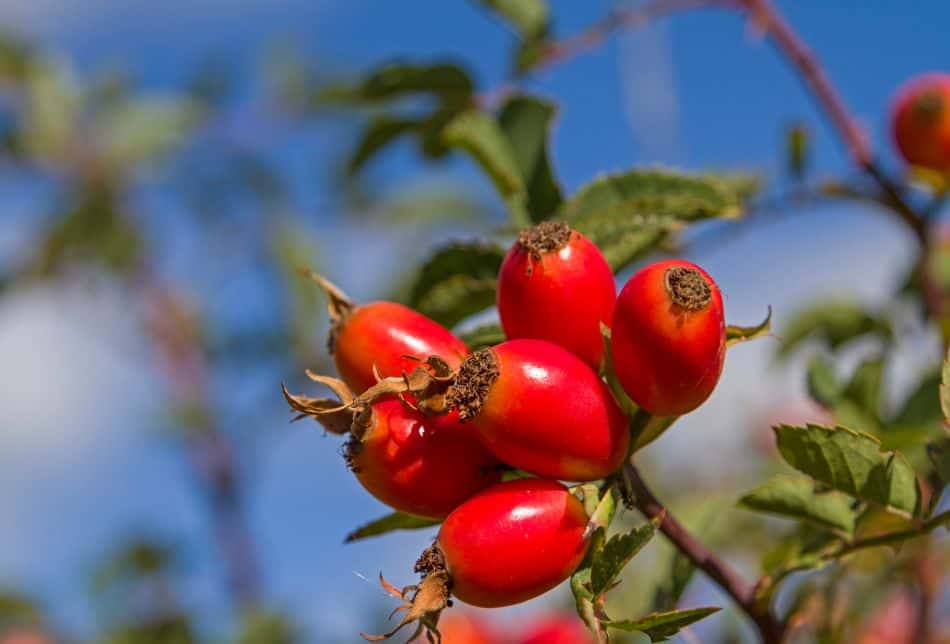
Also regarded as the fruit of the rose, rose hips usually range from red to orange in color. It has a mildly sweet flavor.
They are native to Europe, western Asia, and northwest Africa. Rosehip neurons were found by a multinational team of researchers and were made public in August 2018.
Rose hips are an essential source of vitamins C, E, B, K, calcium, and magnesium.
52. Rowanberry
Another kind of “red berry”- the rowanberry grows on Rowan or mountain-ash shrubs and is strongly acidic in taste.
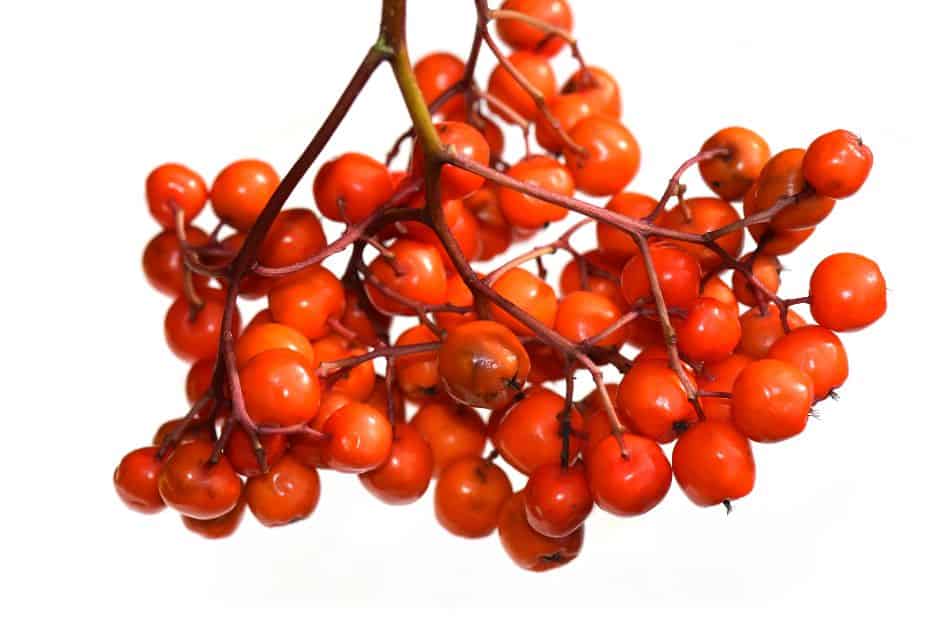
Rowanberry is a great source of vitamins and vital fatty acids despite its modest size. It has the most carotene and is a fantastic source of vitamins C, B, and E.
Additionally, rowanberry has sorbic acid and minerals like potassium, manganese, magnesium, and zinc.
It is most prevalent in the UK and is a native of chilly northern hemisphere locations.
53. Sausages
Sausages have a long history, and they have been around since 5,000 years ago. They have high quantities of iron and vitamin B-12.
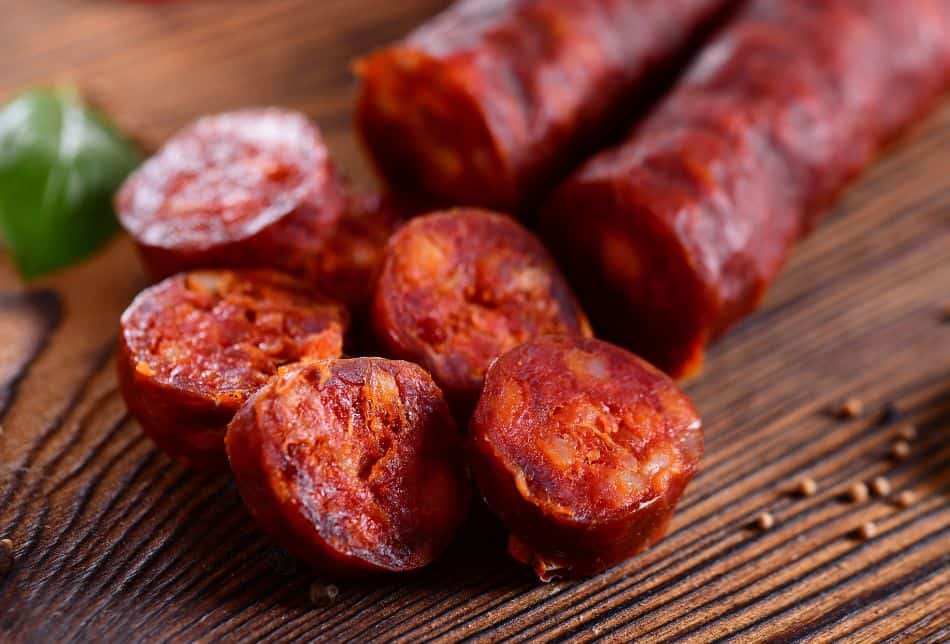
The most common types of sausages are made from pork, beef, chicken, or lamb. They can range from deep, reddish-pink to light reddish-pink colors.
Native to Greece, ancient Babylonia, and Rome, sausages were discovered in Sumeria, now known as Iraq.
Fun fact: The longest sausage ever made was about 38.99 miles long and made it to the Guinness World Records.
54. Sriracha Sauce
Thailand is the country of origin for this hot chili sauce. It is produced by mixing a paste of garlic and chili peppers with vinegar, sugar, and salt.
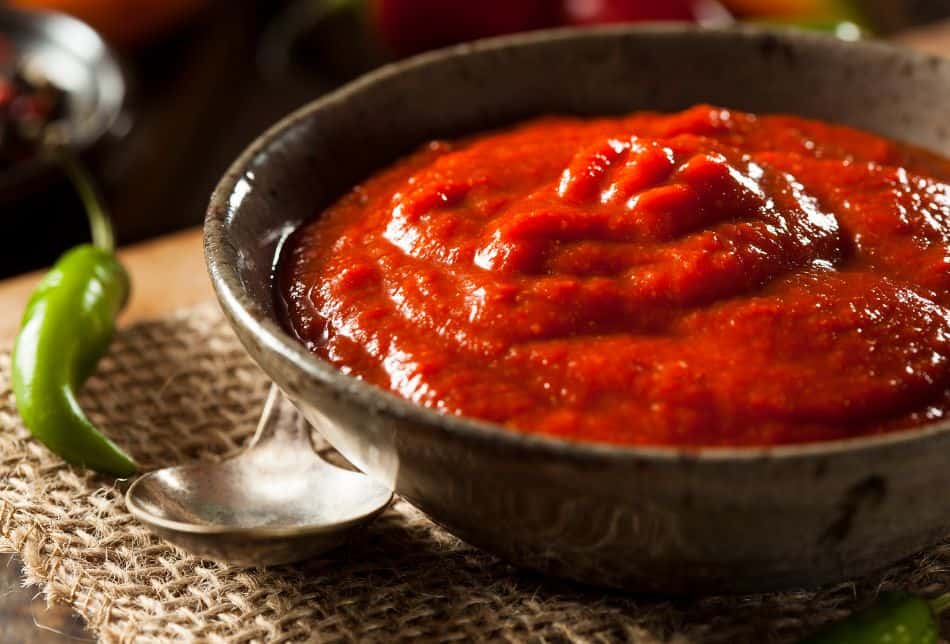
The sauce was originally developed in 1980 by David Tran, a Chinese immigrant from Vietnam, and is now made by Huy Fong Foods in California.
Sriracha, though just a sauce, still contains several vitamins like vitamin A, vitamin B6, and vitamin C. It is also low in calories.
Fact: The sauce is named after the city Si Racha in Thailand
55. Strawberry
Another red fruit on our list is the strawberry. Grown in warm and temperate regions, they are not berries but aggregate accessory fruits.

The color of a strawberry can range from light pink to dark red. The flesh of a strawberry is usually white or cream-colored, with small seeds on the surface.
This juicy fruit is native to North America and was originally founded by Europeans in America in 1588.
Strawberries are rich in potassium and manganese. Additionally, it contains antioxidants called polyphenols.
Fun fact: Strawberries are the only fruits that have seeds visible on the outside
56. Strawberry Tree Fruit
The strawberry tree fruit is natively found in France, Ireland, Western Europe, and the Mediterranean basin.
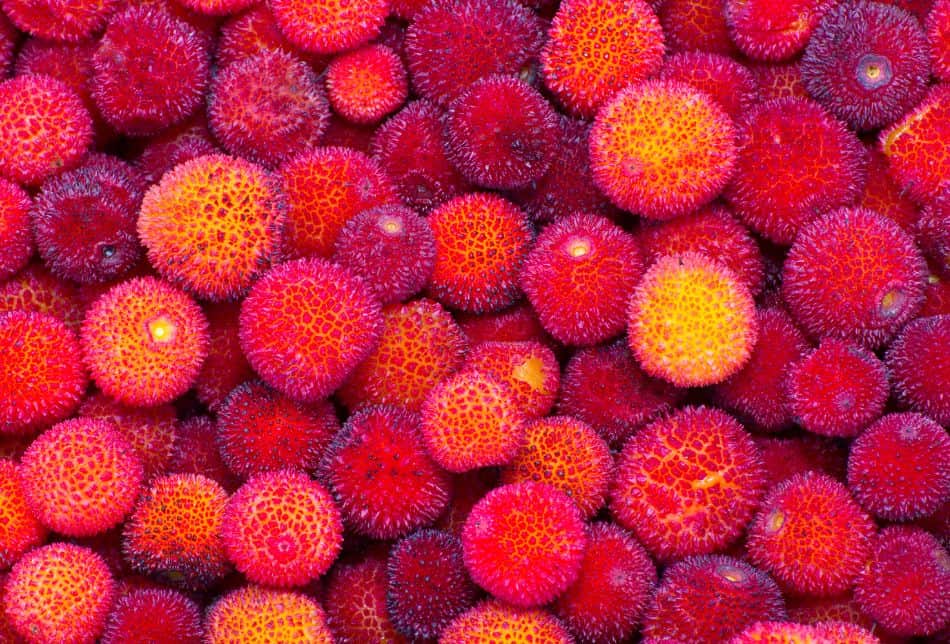
Related to the rose family, when ripe, the tree’s edible berries have a delicate flavor and a diameter of around 2 cm. They have a vivid red hue.
Strawberry tree fruit has a wide range of antioxidants, such as vitamin C, vitamin E, fiber, phenolic compounds, and carotenoids.
57. Sumac
The next food is spice. Sumac is obtained from the coarsely crushing of the berries of its plant. It tastes sharp, acidic, and lemony and is dark red.
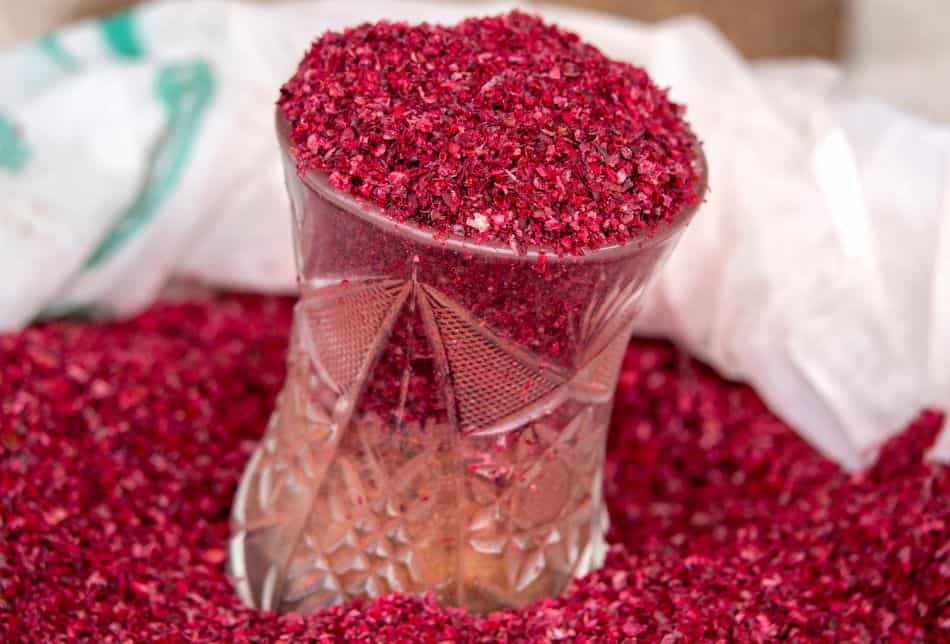
Native to Iran, its first usage dates back to medieval times, majorly from the thirteenth to fifteenth centuries.
Sumac is loaded with vitamins such as riboflavin B2, thiamin B1, biotin, cyanocobalamin B12, nicotinamide, and pyridoxine B6.
Fact: Sumac leaves are a source of black ink.
58. Sweet Potato
The sweet potato is a dicotyledonous plant native to tropical South America. It belongs to the morning glory family.
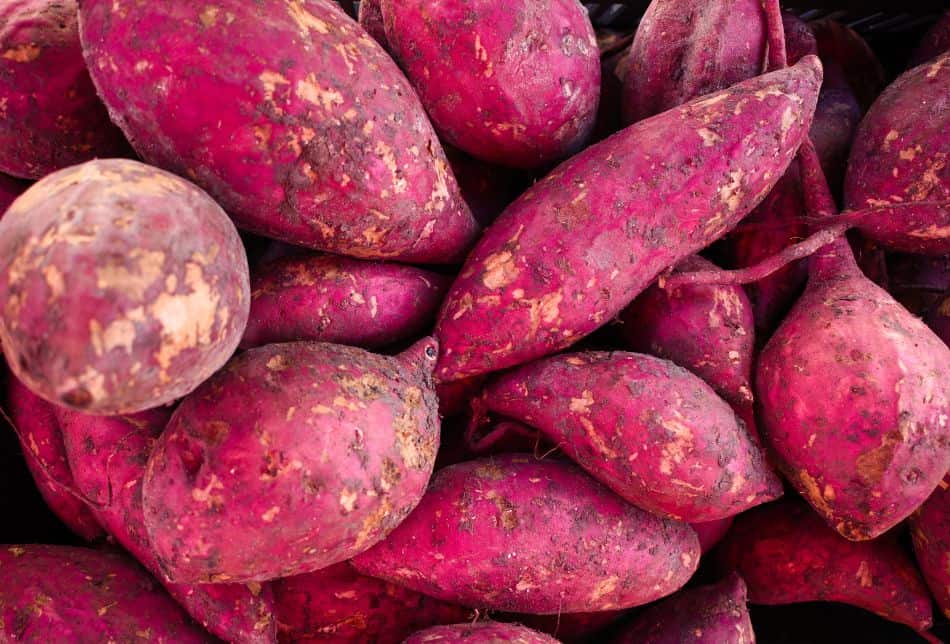
The root of the sweet potato is long and tuberous. The color varies from reddish-purple to cream and yellow.
The archaeologists found remains of the vegetable in Polynesia dating back to AD 1000 to AD 1100.
Sweet potato is a great source of vitamins A, C, E, B6, and B5. Moreover, it also contains additional nutrients like magnesium and potassium.
59. Tamarillo
Belonging to the nightshade family, the tamarillo is an egg-shaped fruit. Its exterior is smooth with leathery skin that can be either yellow, red, or purple.
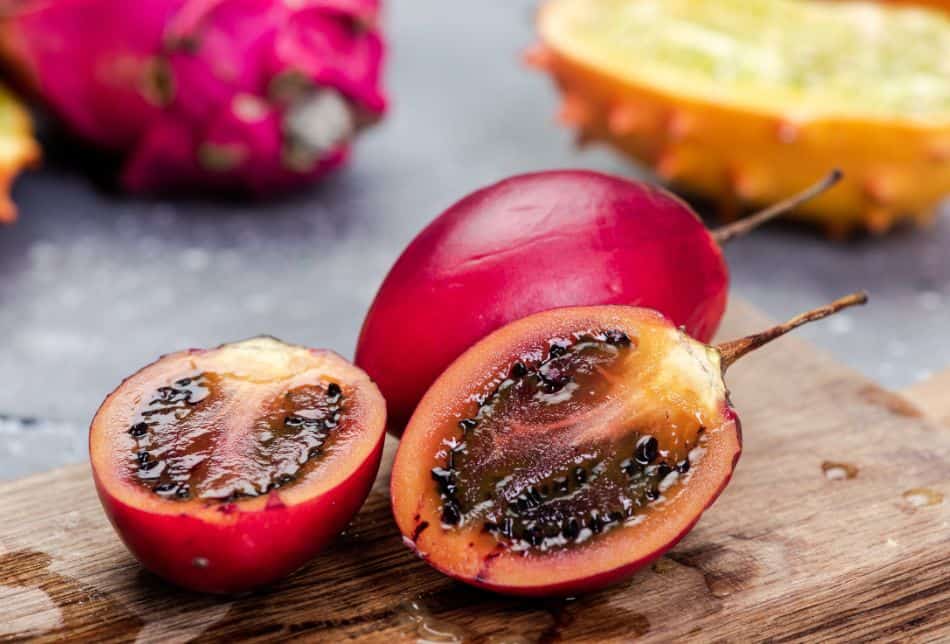
In the late 1800s, tamarillos were brought to New Zealand from Asia. The red tamarillo, on the other hand, was discovered in the 1920s.
The Andes of Ecuador, Bolivia, Peru, Colombia, Argentina, and Chile is home to the tamarillo plant.
Tamarillo contains nutrients such as pro-vitamin A, potassium, vitamins A, C, E, and carbohydrates.
60. Tayberry
A cross of blackberry and raspberry, the tayberry is an edible fruit that originated in Scotland in 1979.
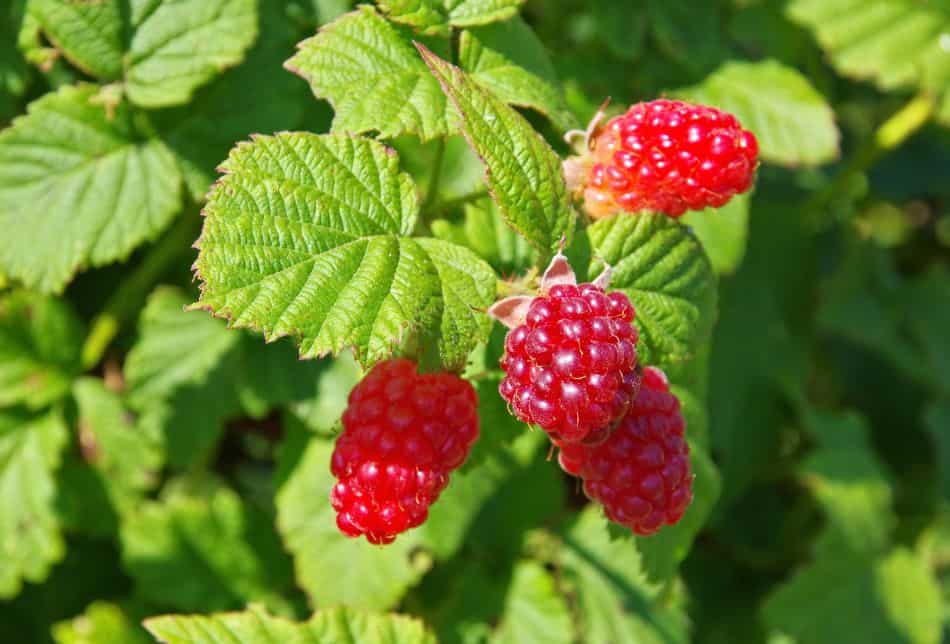
The plant is a thorny shrub that grows to about 2 meters in height. The berries are large, dark-red, and have a sweet flavor.
Tayberries are a good source of antioxidants, vitamin C, and bioflavonoids. They also provide folic acid, folate, and fiber.
Fact: They take their name from the River Tay in Scotland.
61. Tomato
A fruit that was frequently mistaken as a vegetable, tomatoes are the edible fruit of the plant Solanum Lycopersicum, commonly known as a tomato plant.

Supposed to have originated from Mexico, Central America, and western South America, the first recorded usage of the word “tomato” dates back to 1595.
It is derived from the Spanish word tomate, which in turn comes from the Nahuatl word tomatl.
The color of a tomato can be anything from red and yellow to green, depending on its variety.
Tomatoes are specifically rich in potassium, vitamins B, E, and lycopene.
62. Watermelon
Watermelon is a large fruit belonging to the gourd family. It has a hard green exterior with a juicy red or pink interior.

The first recorded harvesting of watermelon happened almost 5000 years ago in Egypt. Although, northeastern Africa is the home of the actual ancestor of the watermelon we know today.
It has minerals including lycopene, citrulline, and vitamins A and C. Watermelon is also known for having a very high water content and minerals like potassium and magnesium.
Fact: Watermelon is the official state vegetable of Oklahoma.
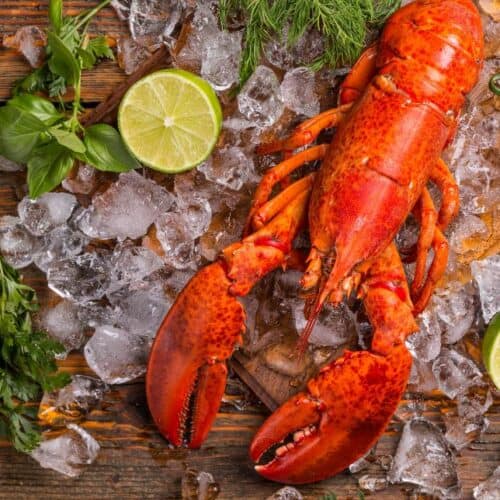
Foods That Are Red In Color
Ingredients
- Beef
- Beets
- Blood Oranges
- Carmine
- Cherries
- Cranberries
- Cardinal Grapes
- Caribbean Red Papaya
- Cashew Apple
- Cloudberry
- Crab
- Goji Berries
- Ham
- Hawthorn Berry
- Hibiscus Tea
- Jujube
- Ketchup
- Kidney Beans
- Lingonberry
- Lobster
- Lychee
- Marinara Sauce
- Mulberry
- Muntingia
- Paprika
- Pepperoni
- Pink/Red Grapefruit
- Plum
- Pomegranate
- Prickly Pear
- Radicchio
- Radishes
- Rambutan
- Raspberry
- Redcurrant
- Red Banana
- Red Bell Peppers
- Red Chili Peppers
- Red Delicious Apples
- Red Dragon Fruit
- Red Gooseberry
- Red Grapes
- Red Peach
- Red Pear
- Red Potatoes
- Red Quinoa
- Red Rice
- Red Velvet Cake
- Red Wine
- Rhubarb
- Rose Hip
- Rowanberry
- Sausages
- Sriracha Sauce
- Strawberry
- Strawberry Tree Fruit
- Sumac
- Sweet Potato
- Tamarillo
- Tayberry
- Tomato
- Watermelon

